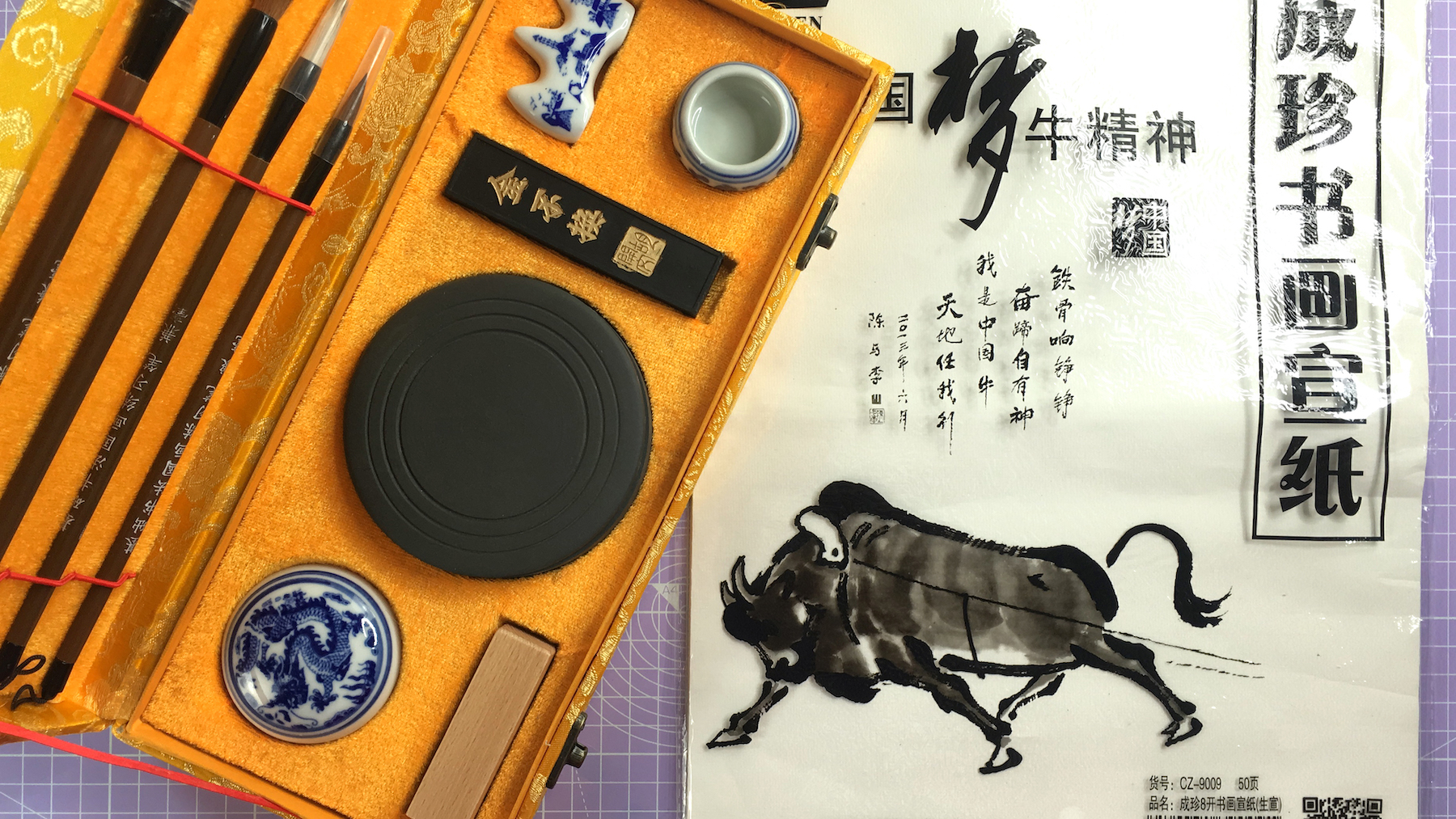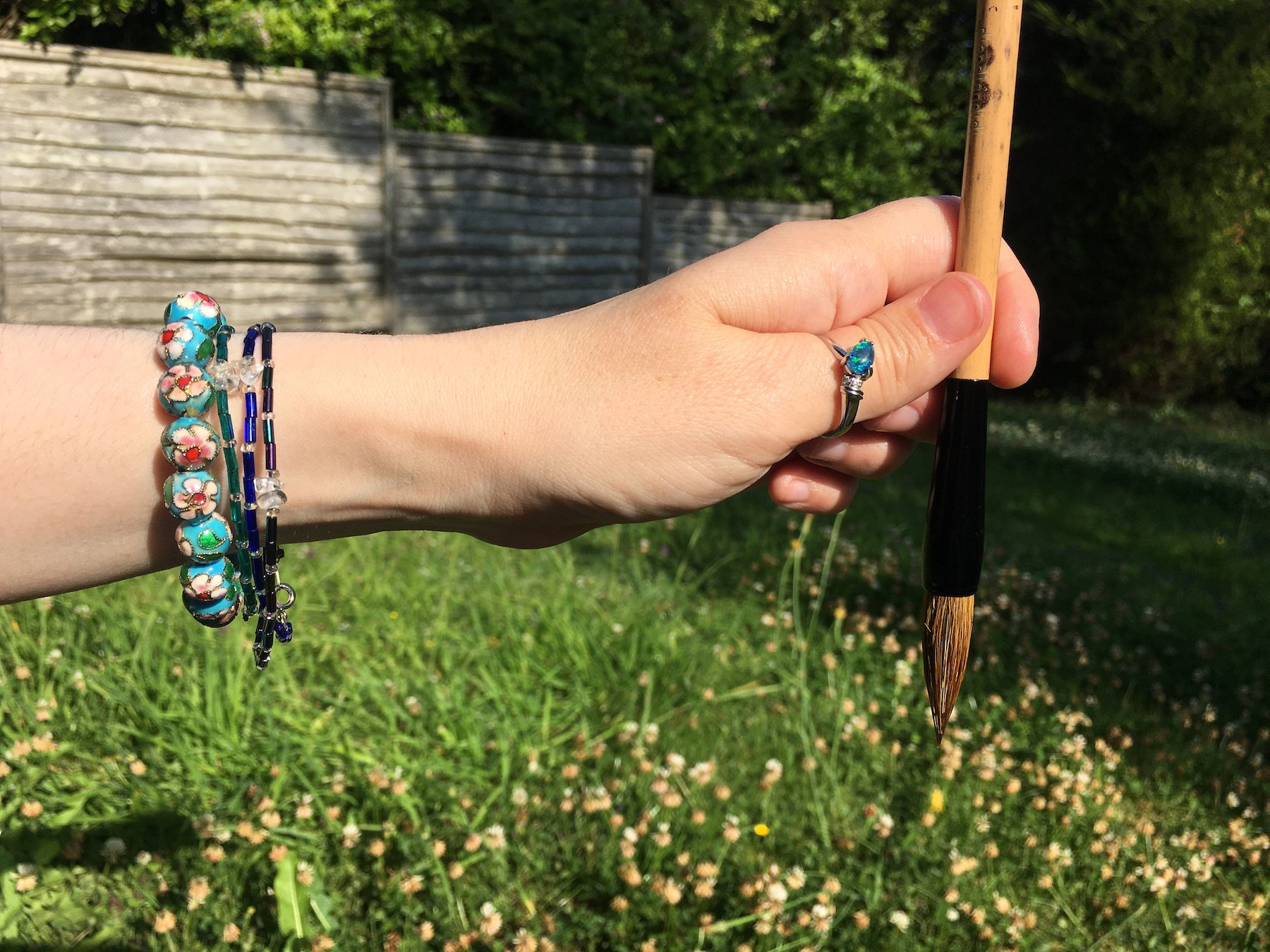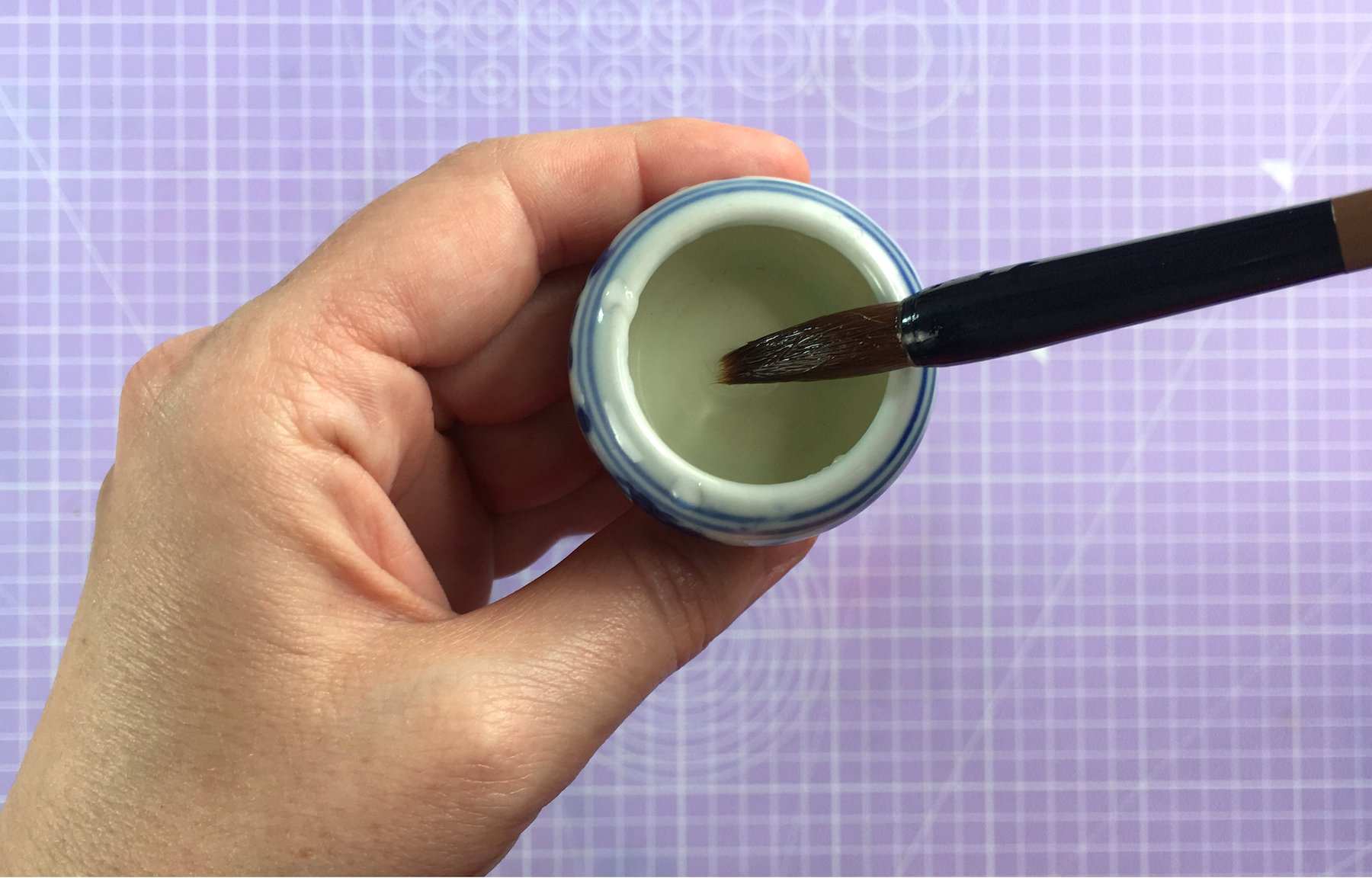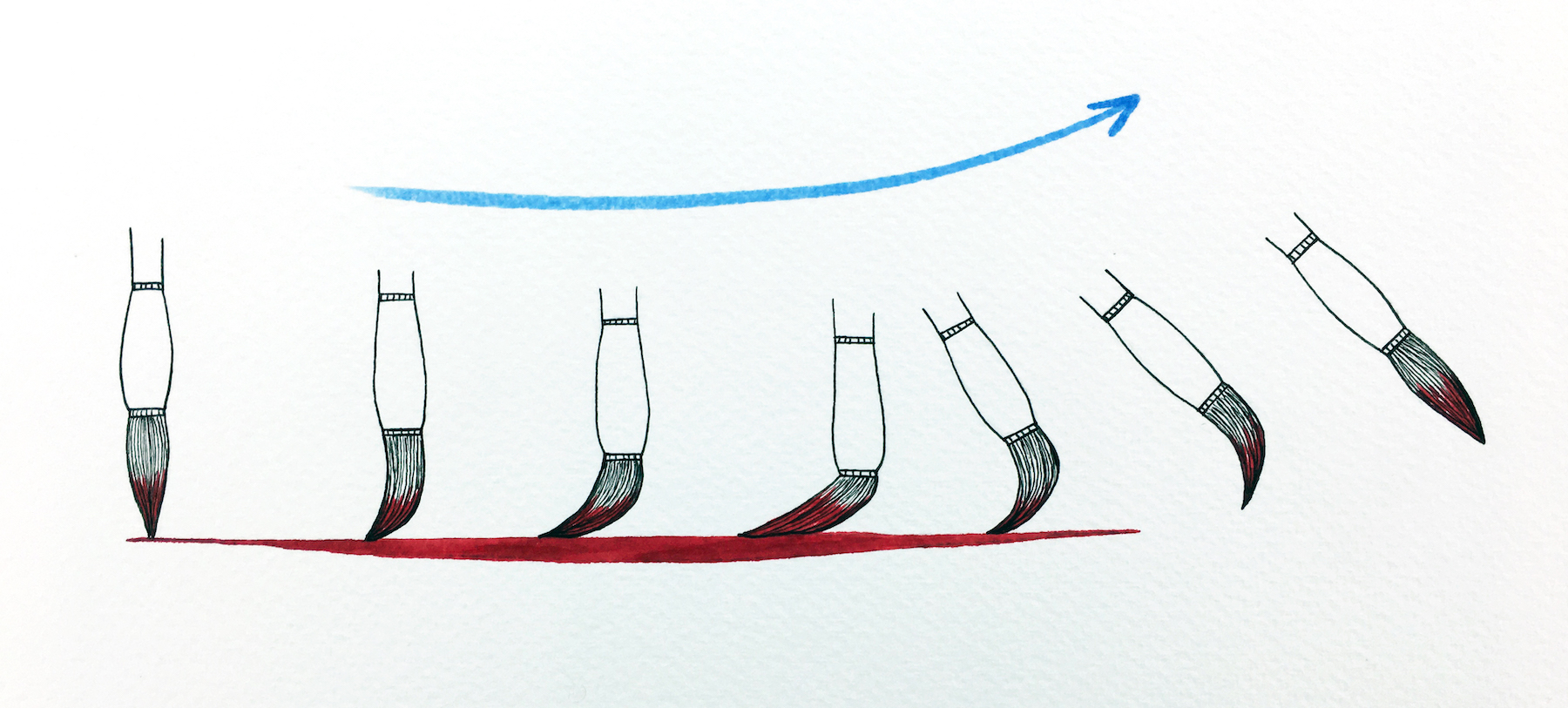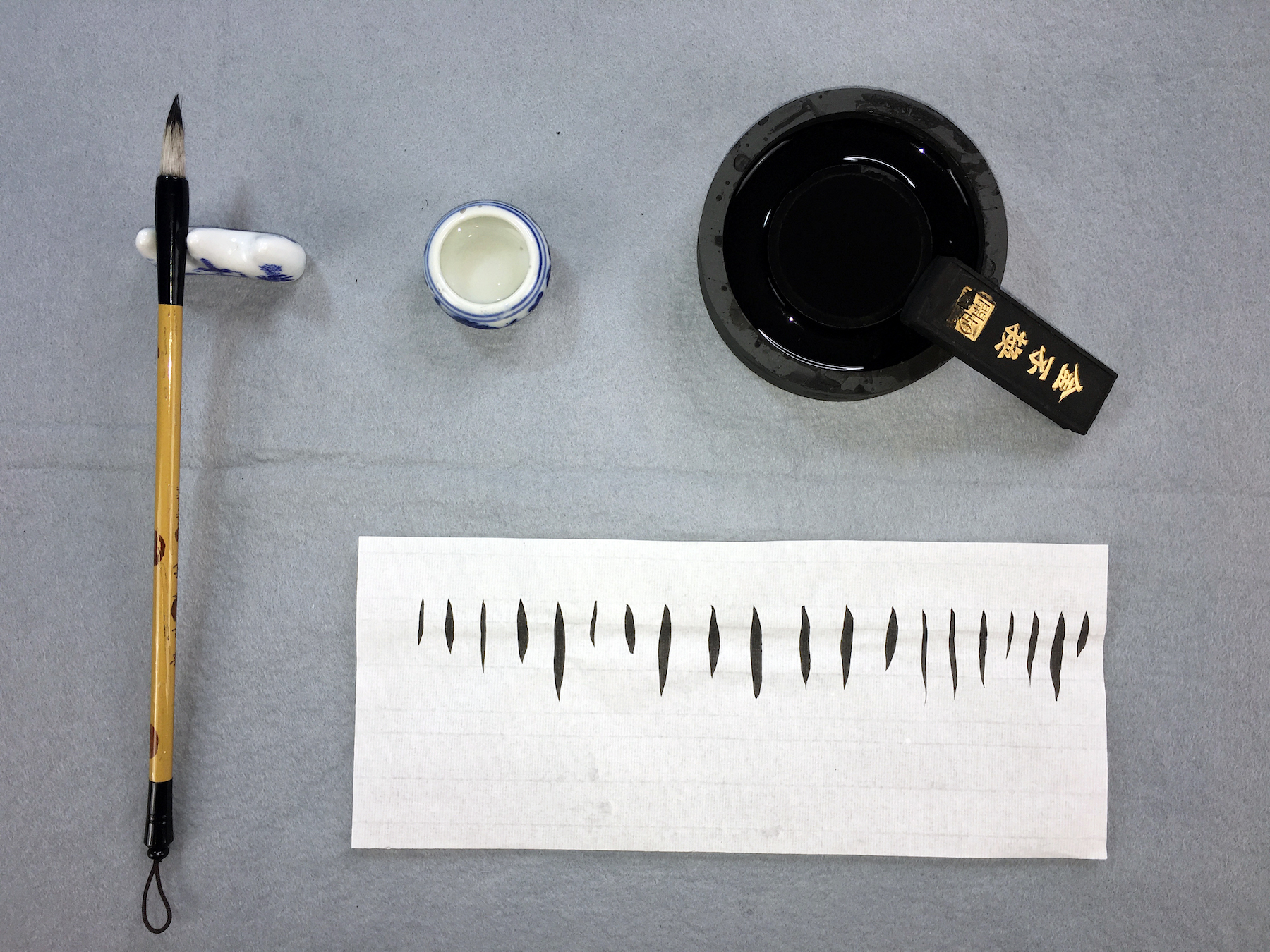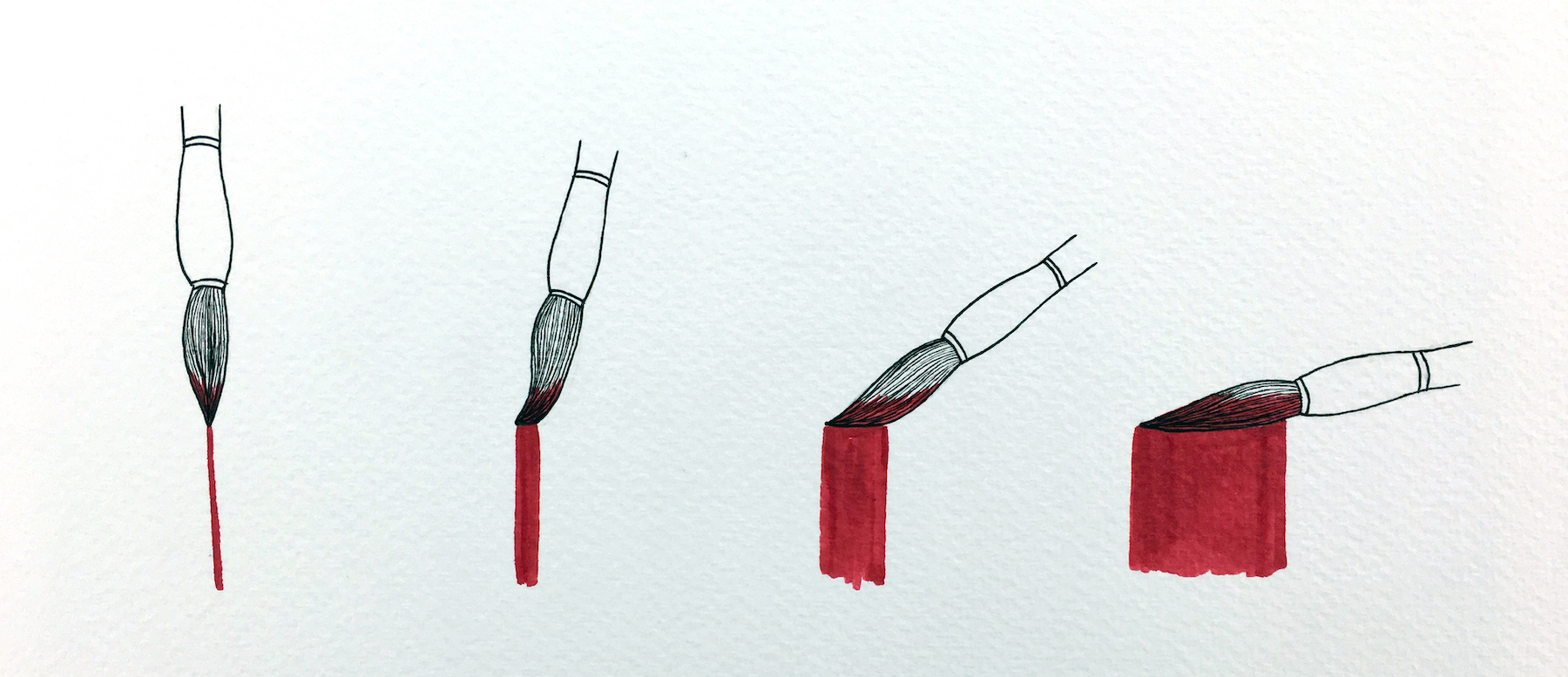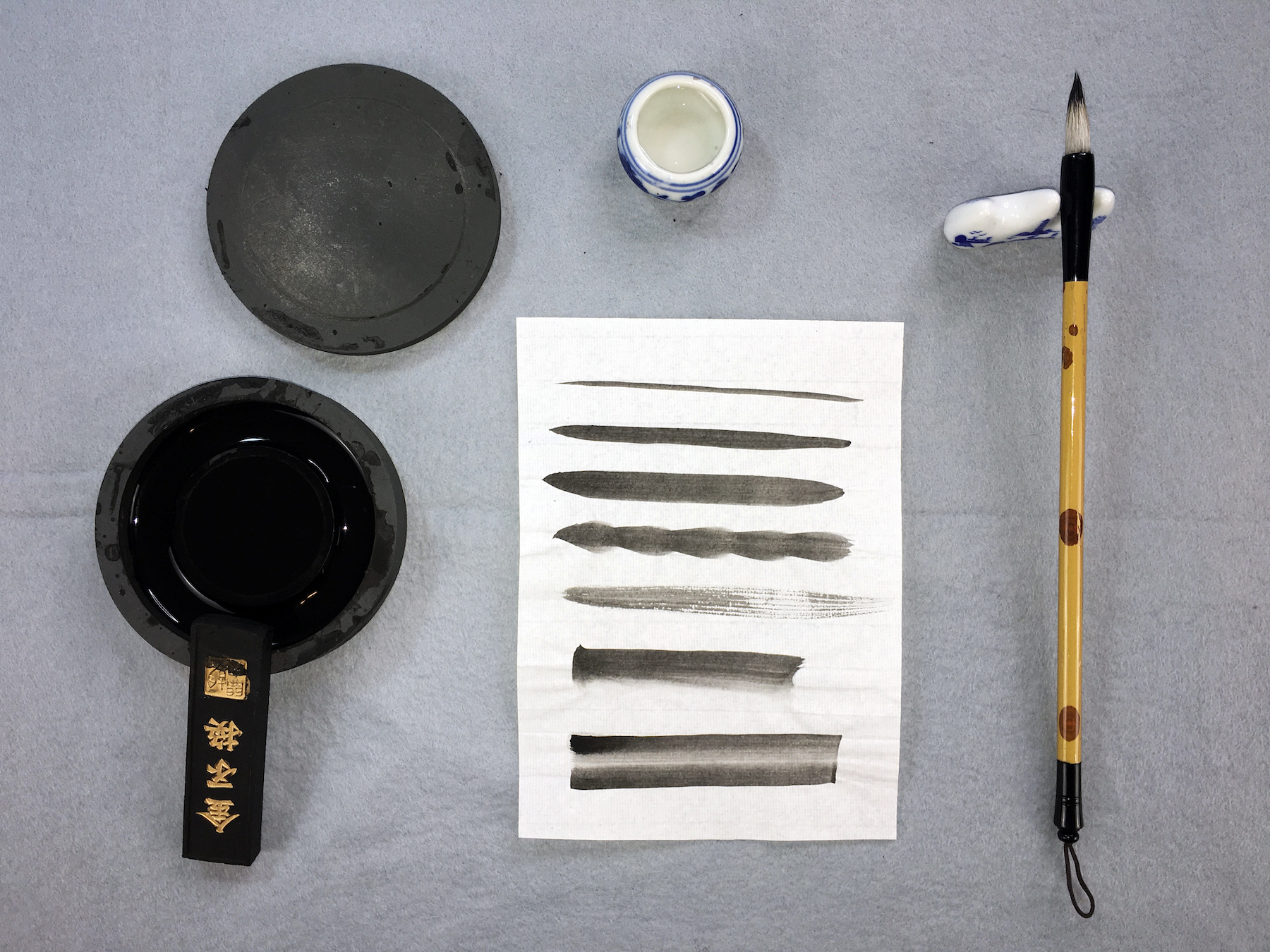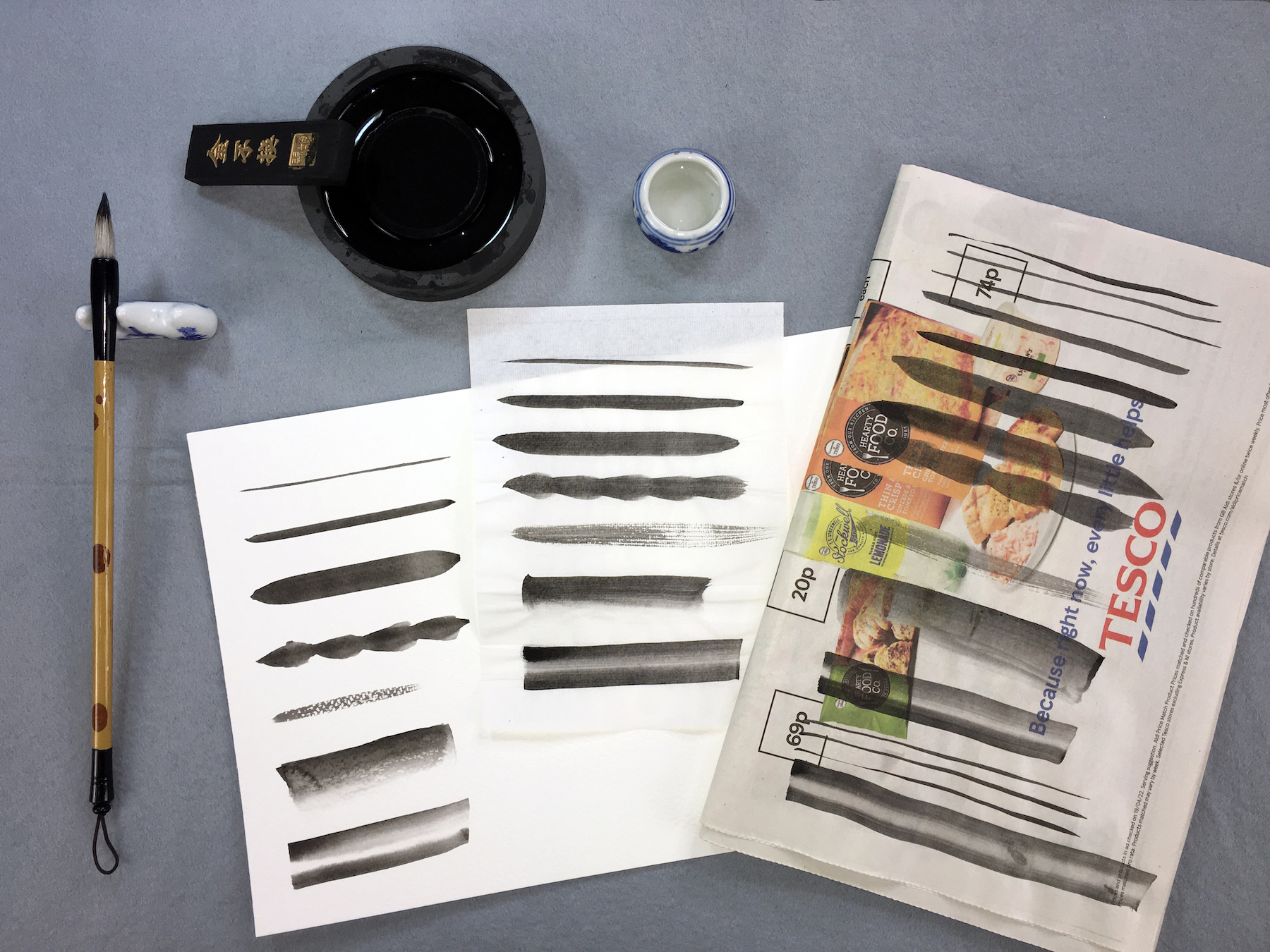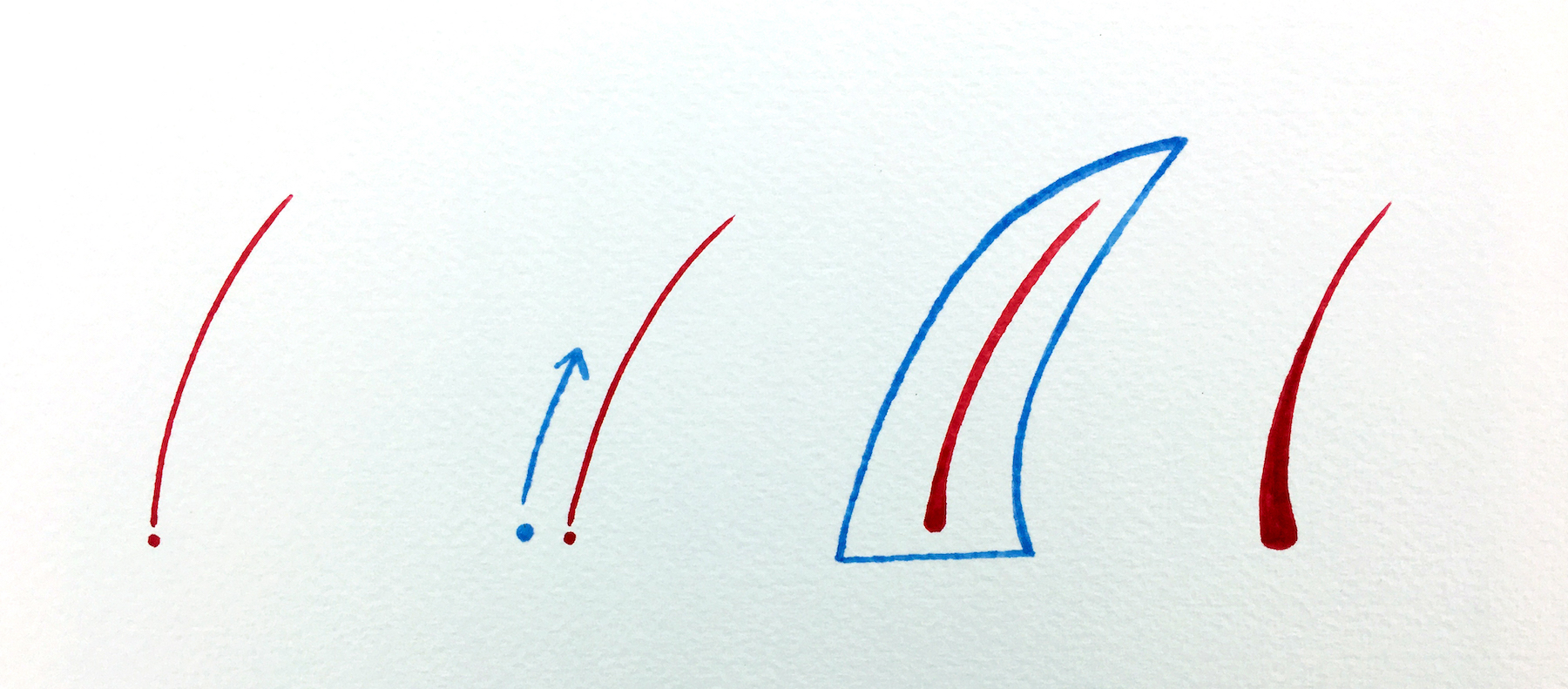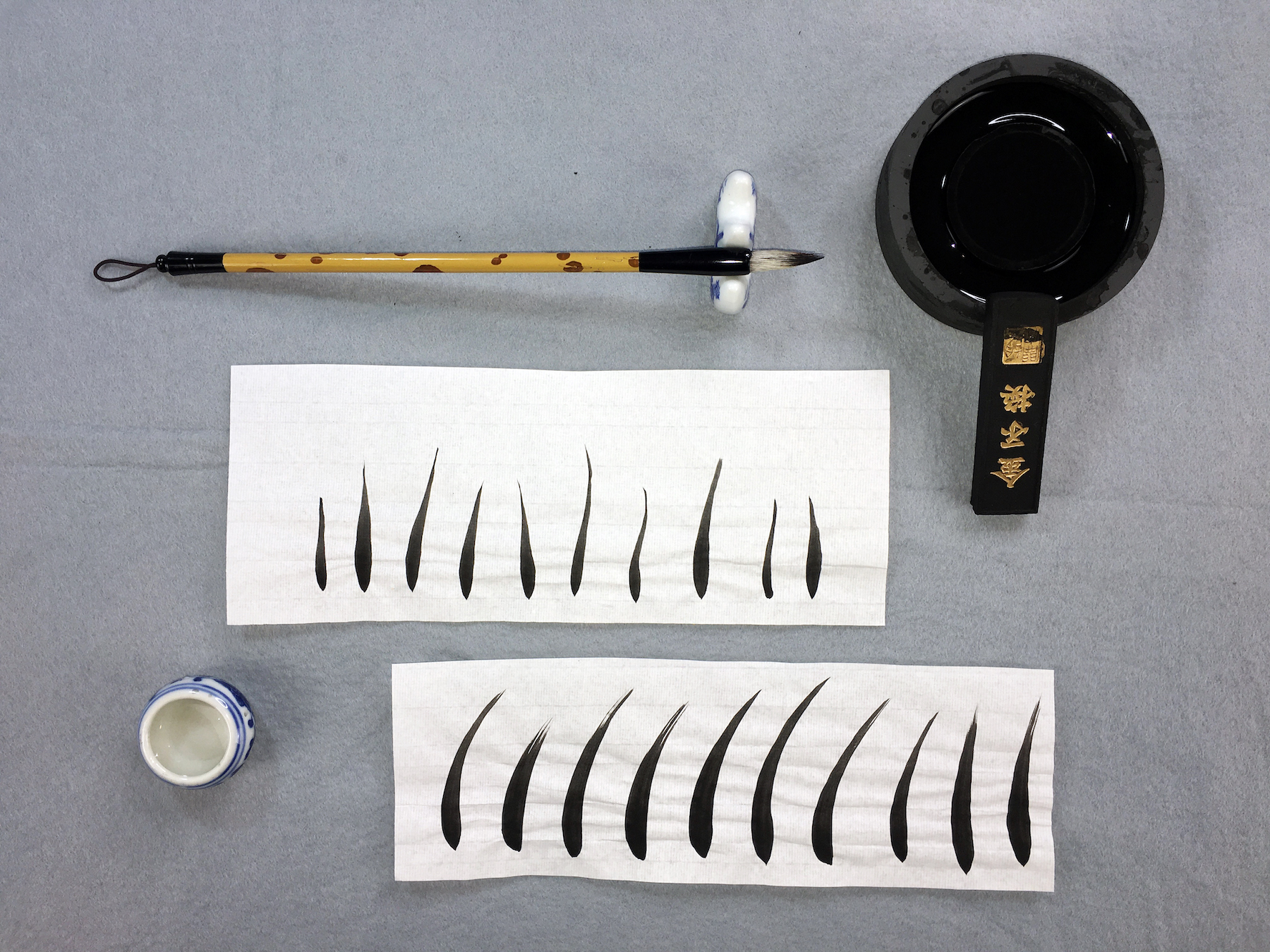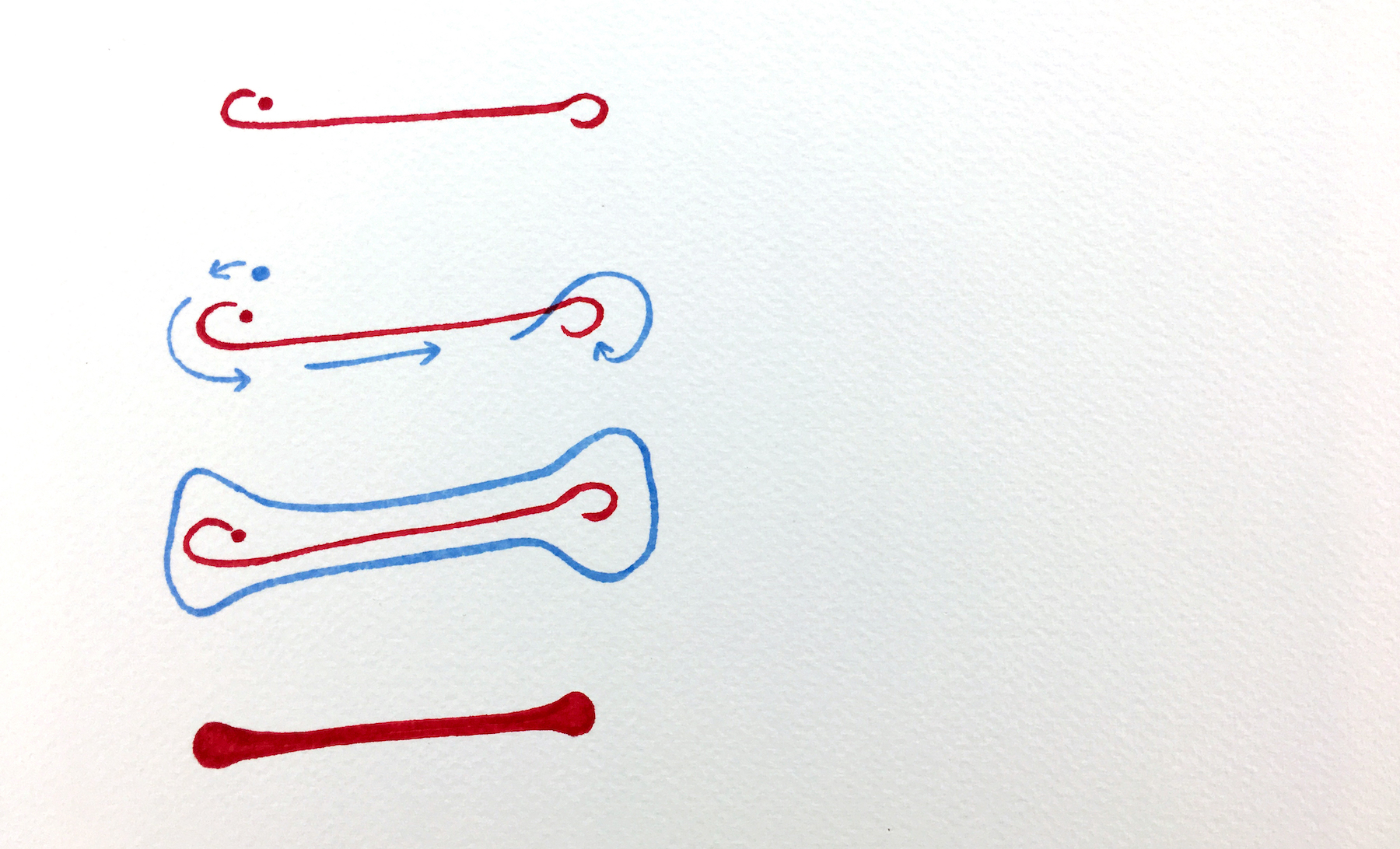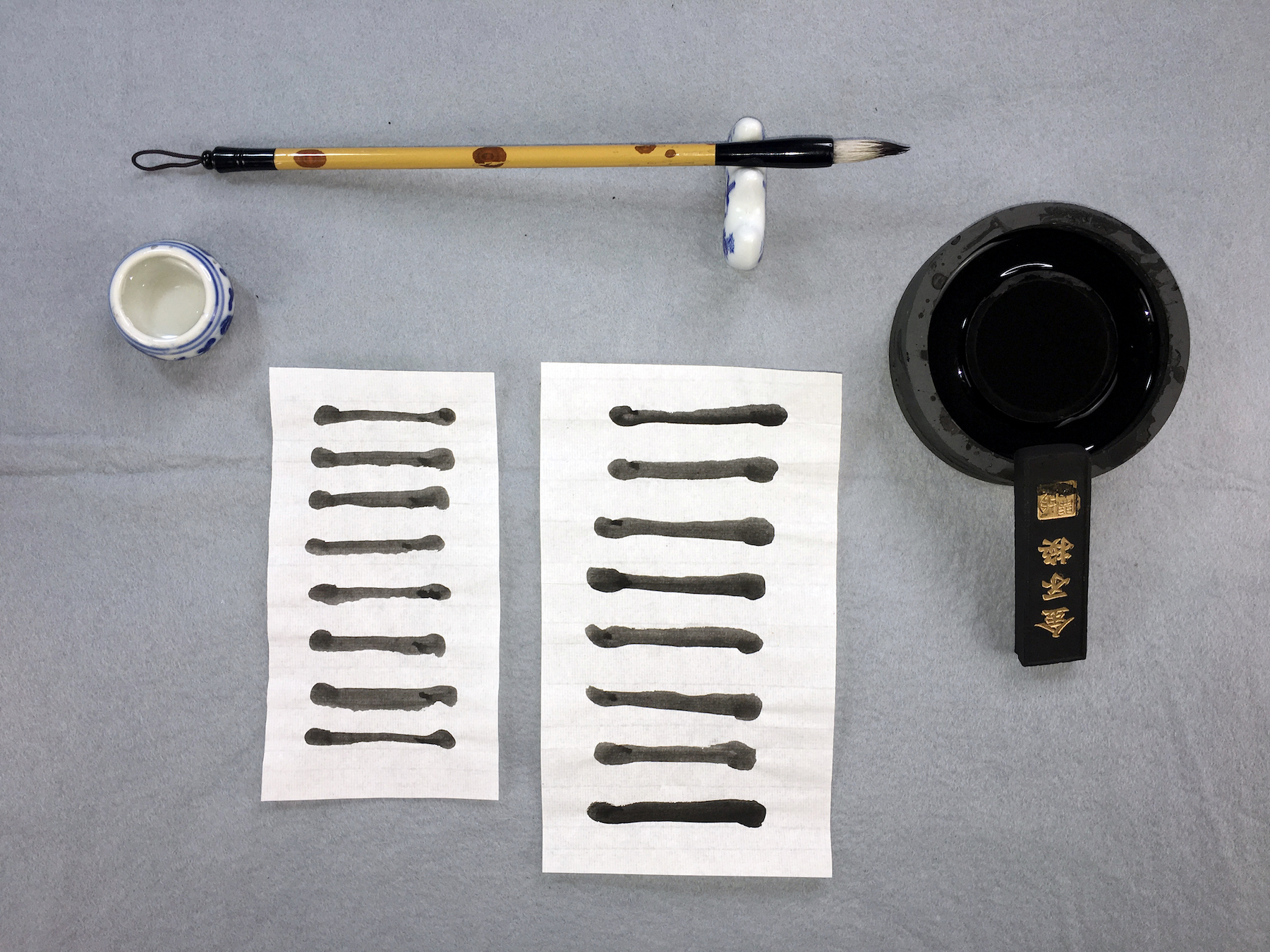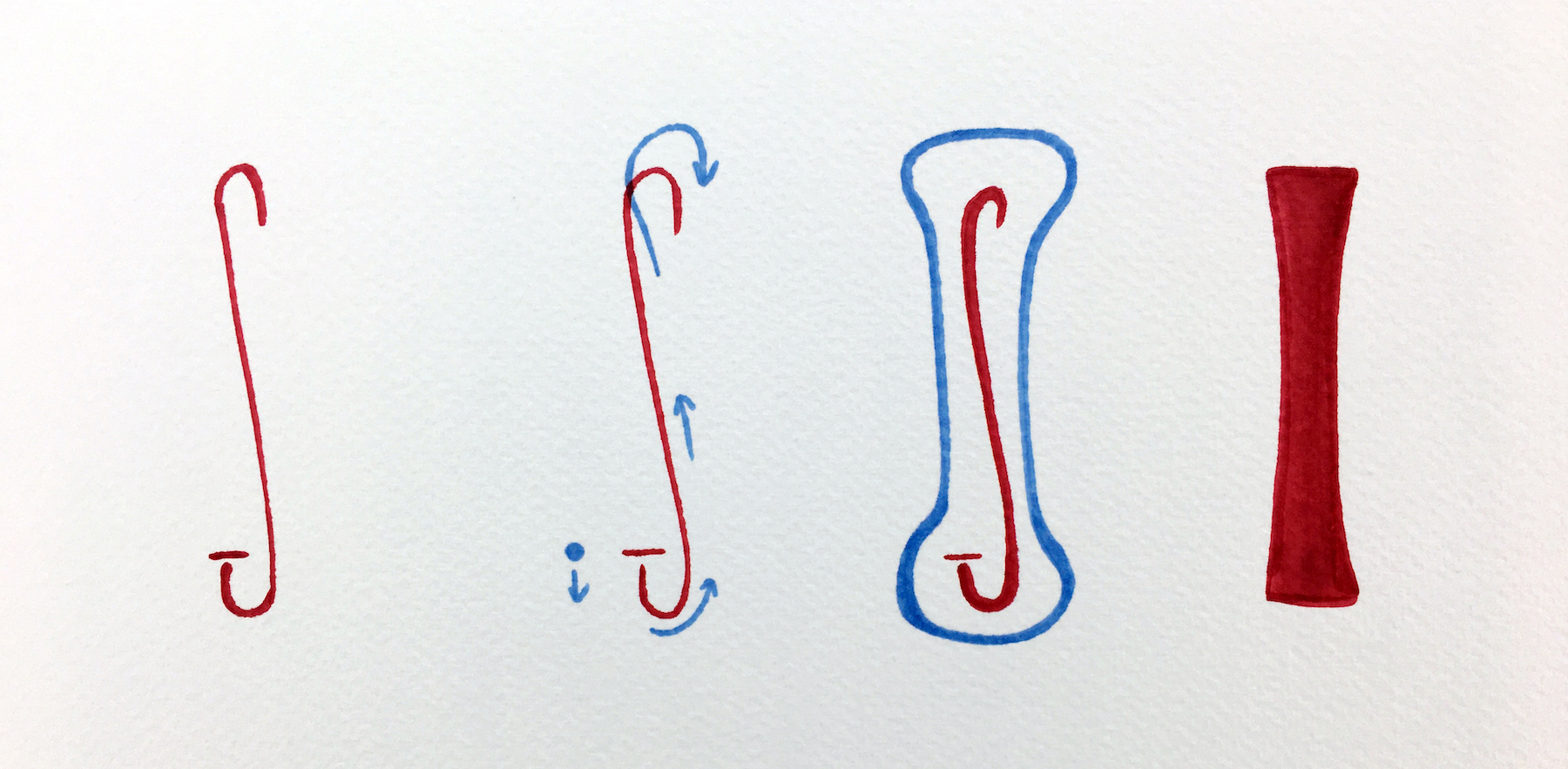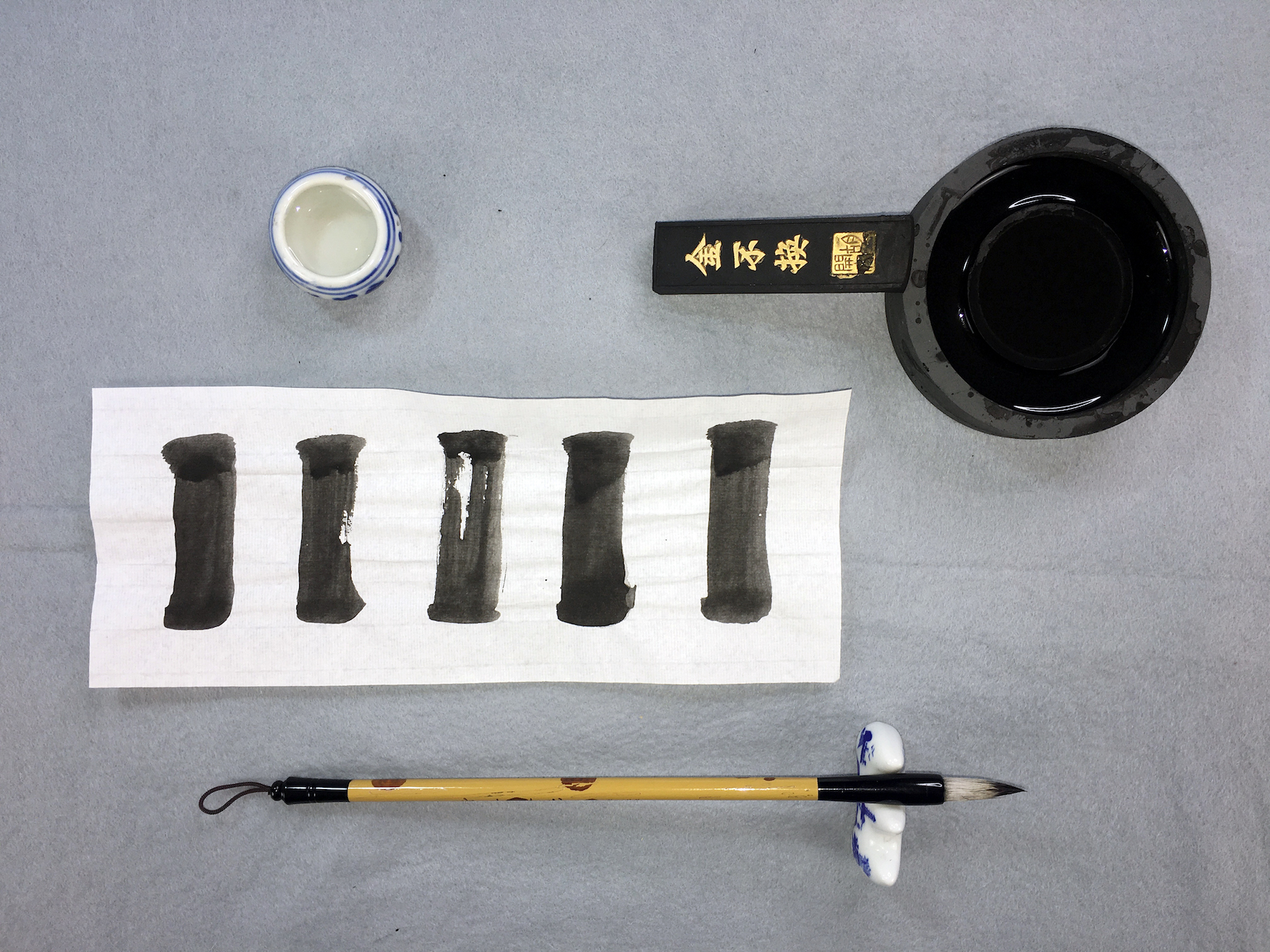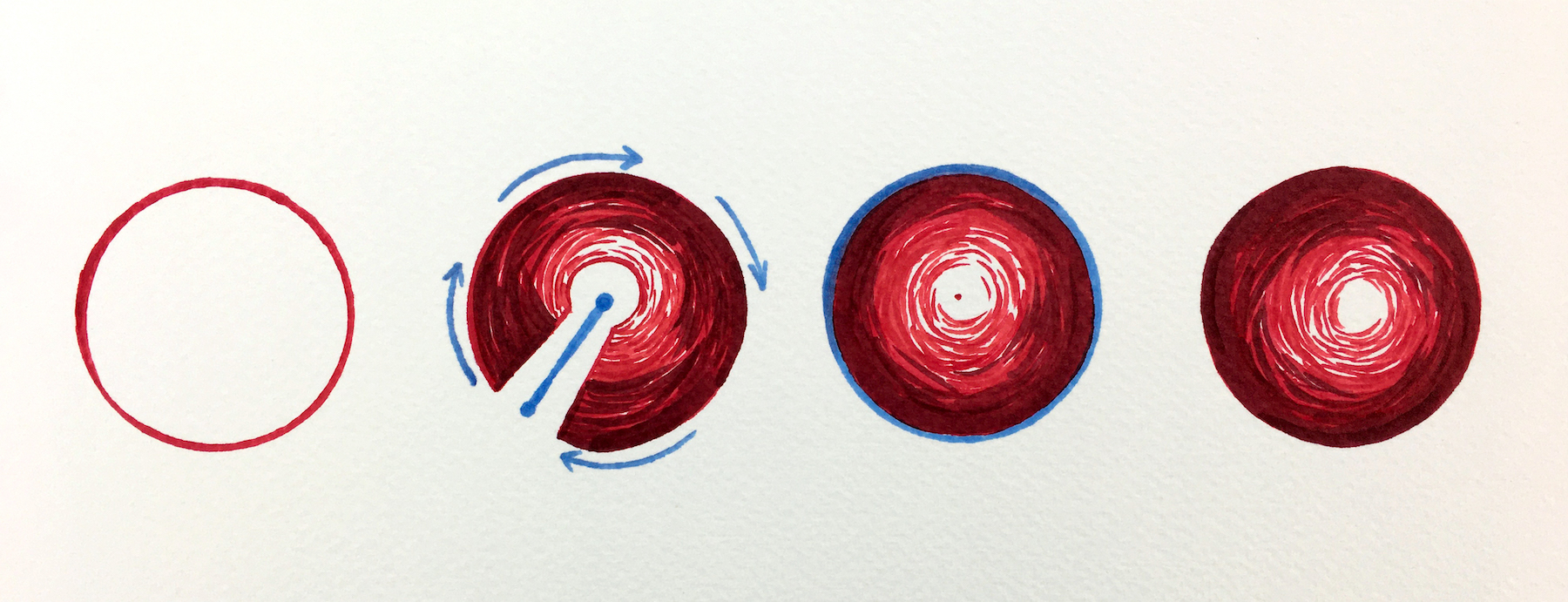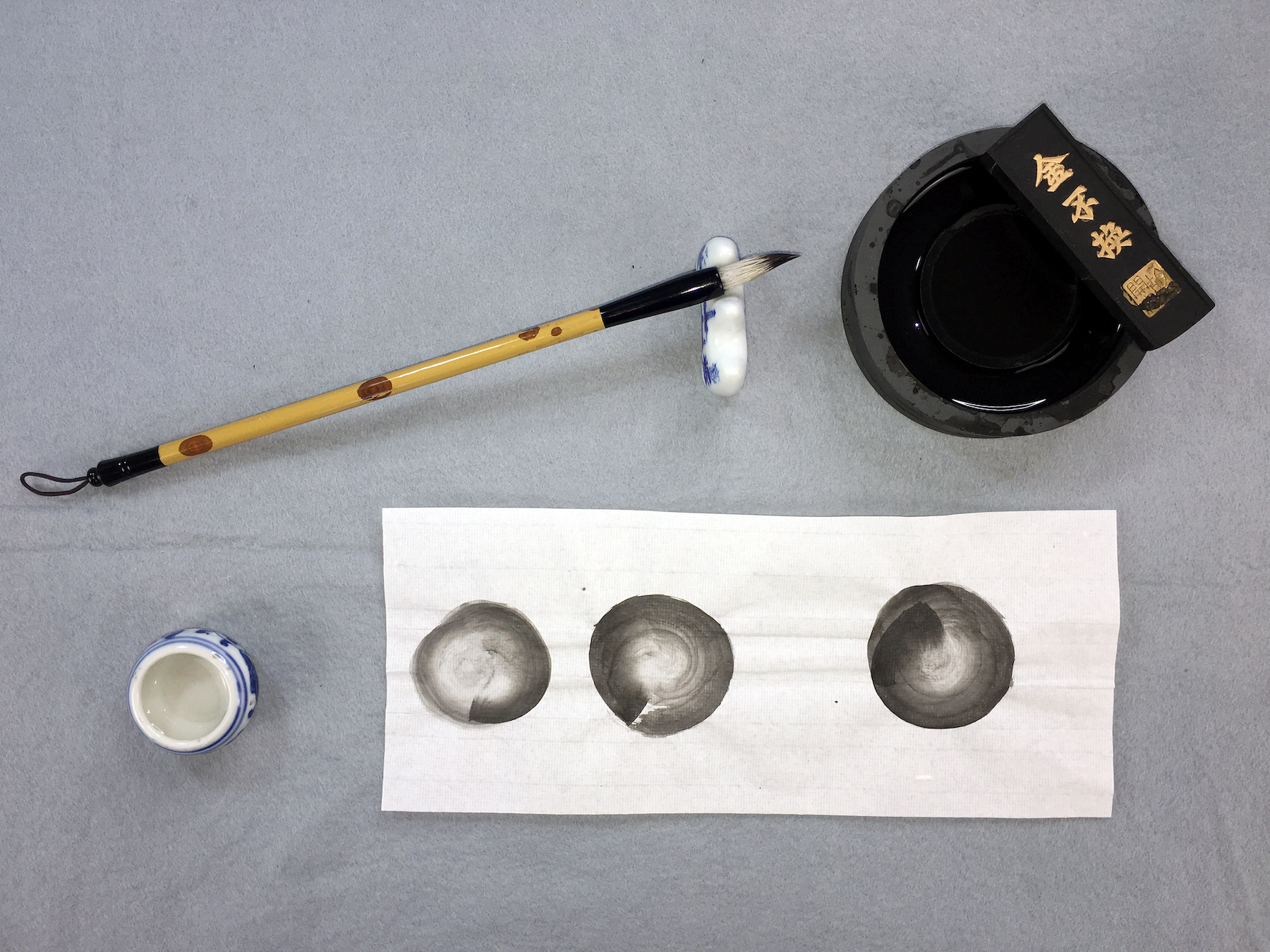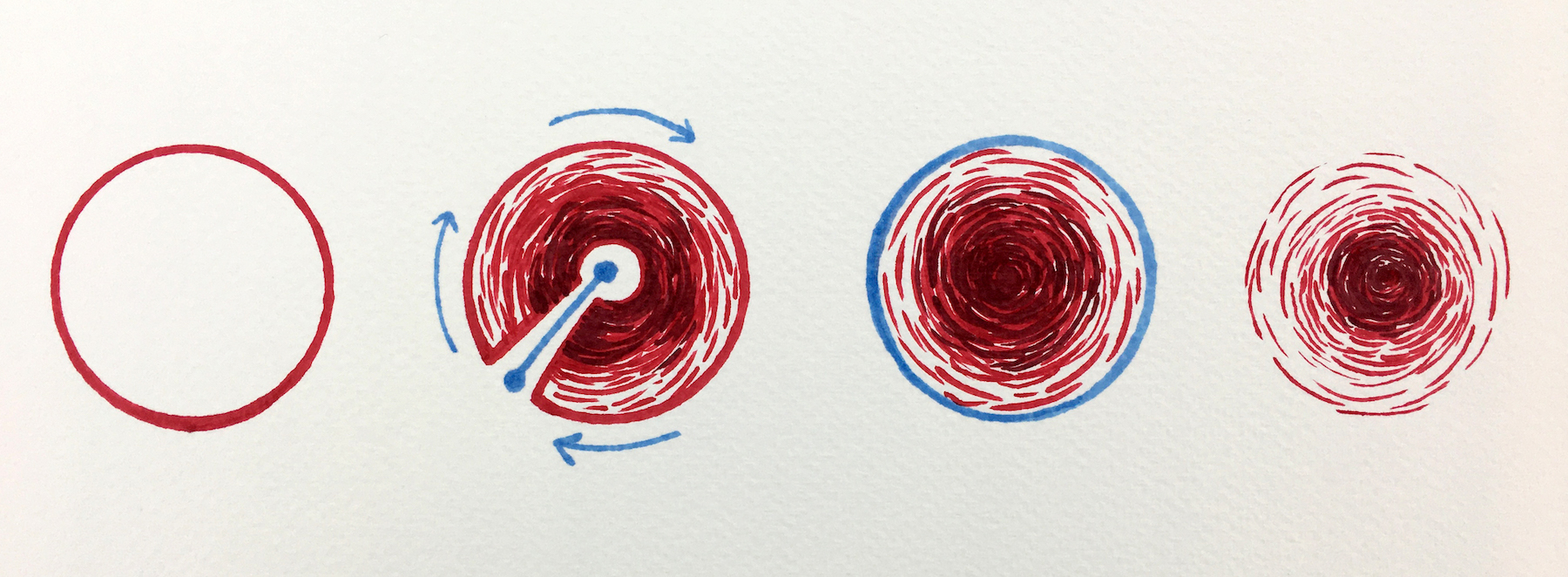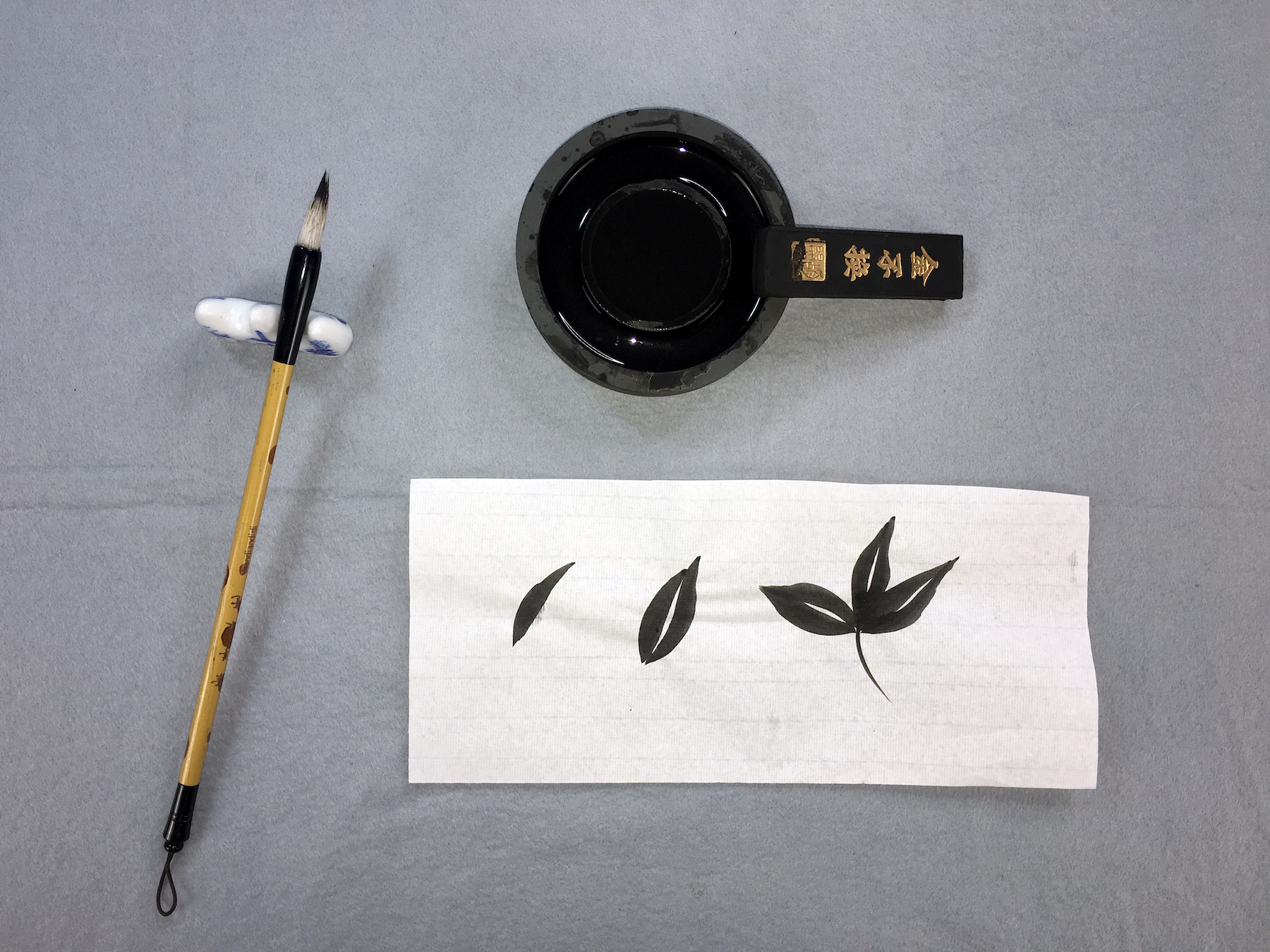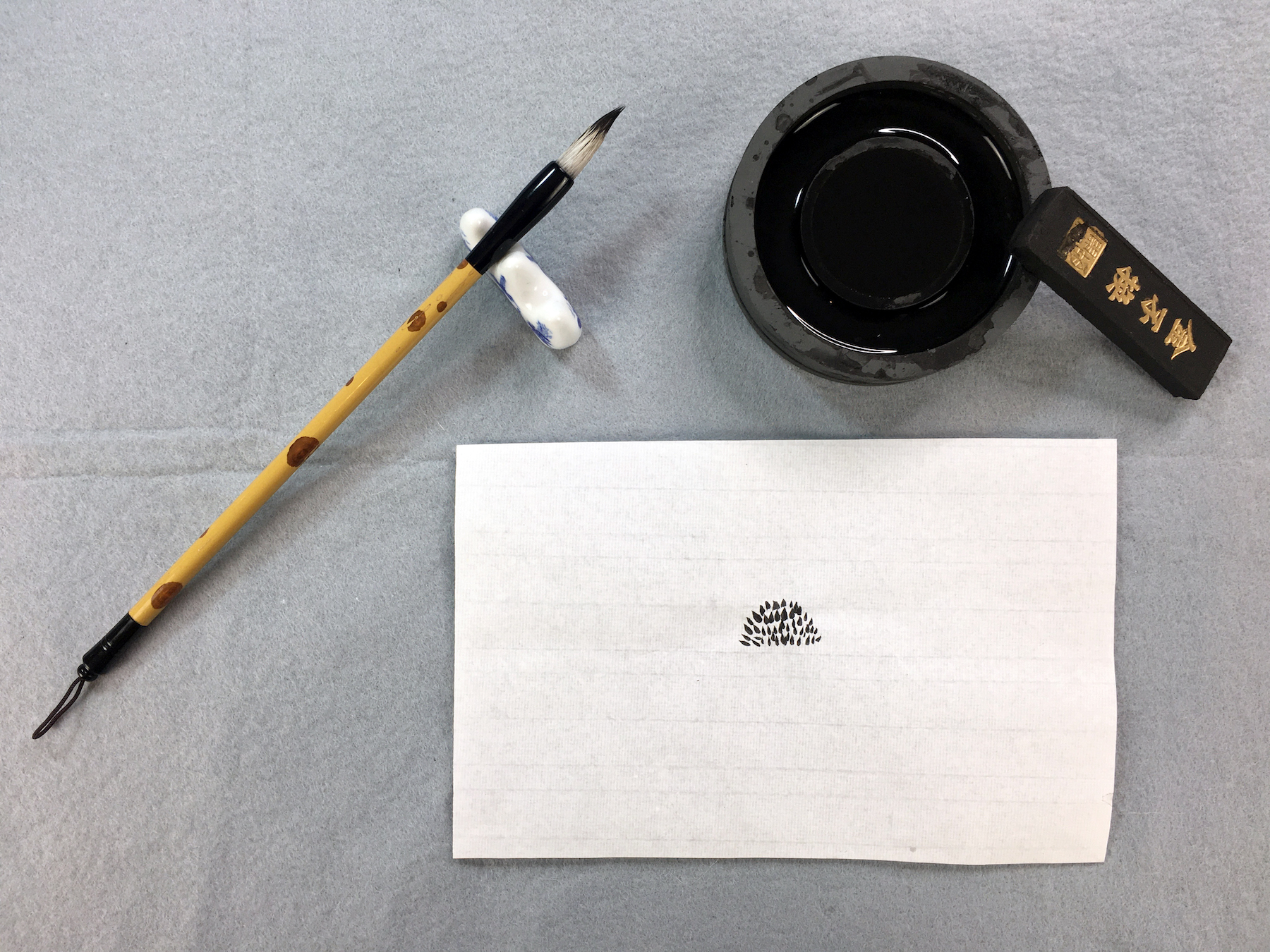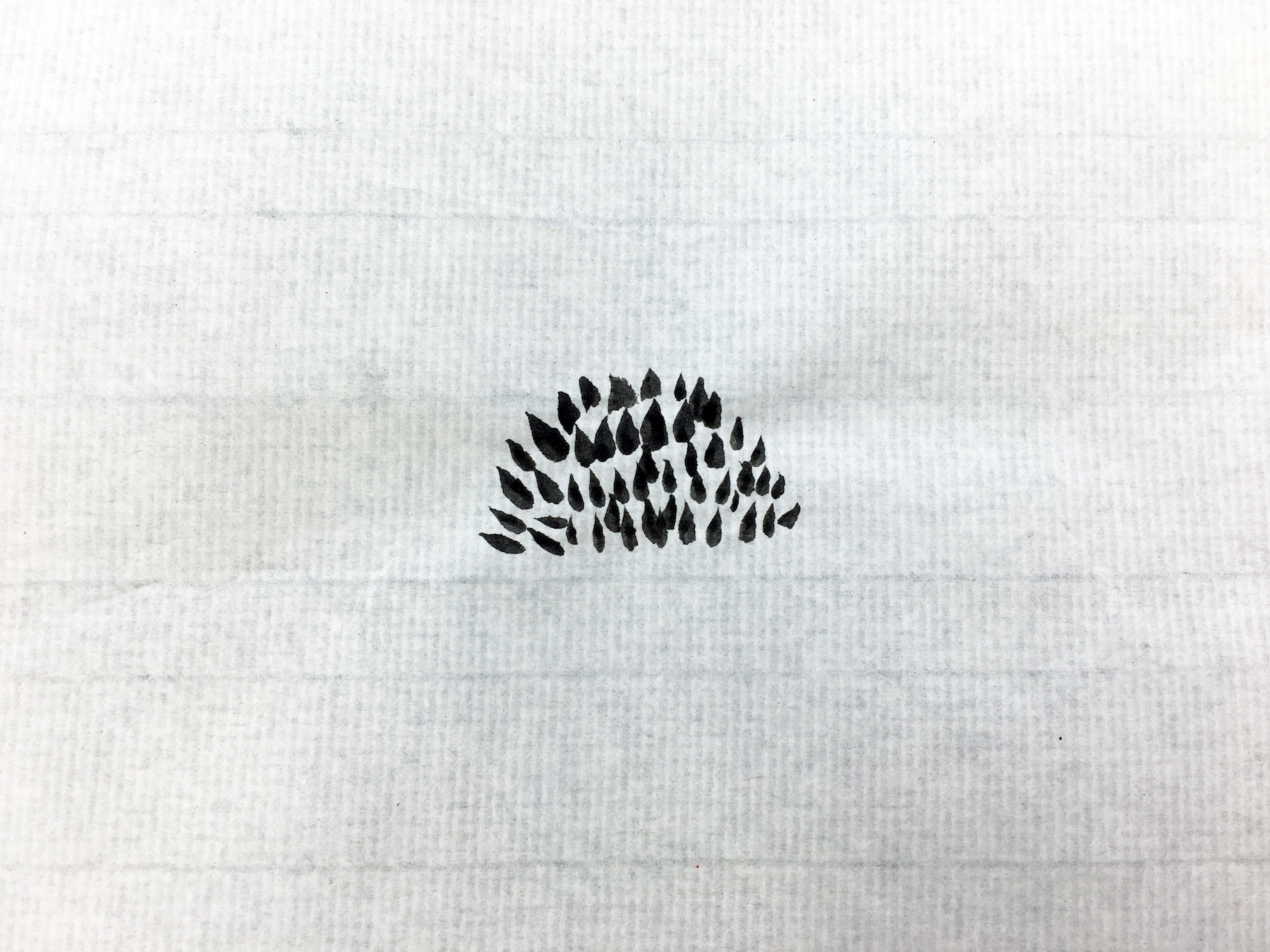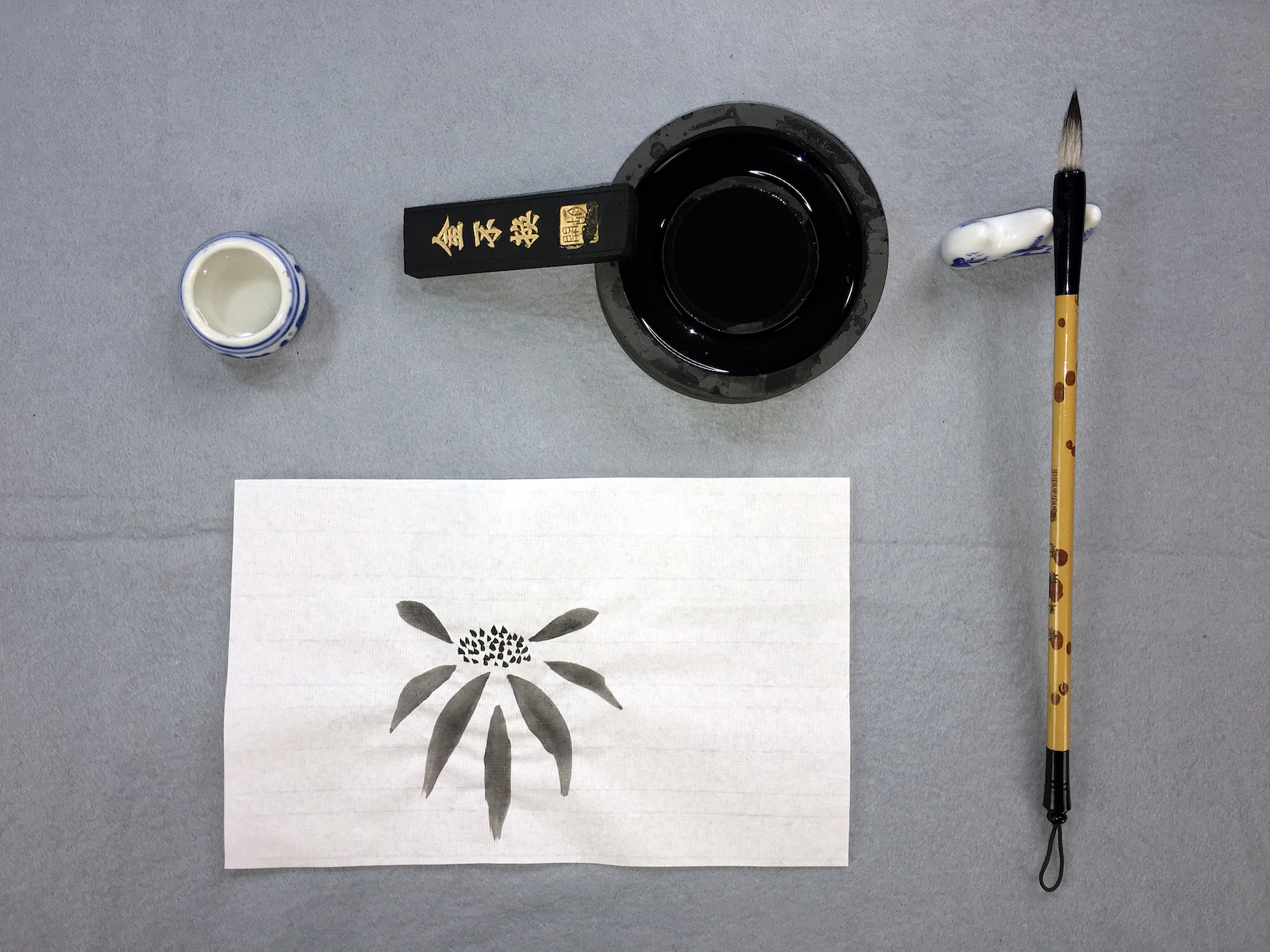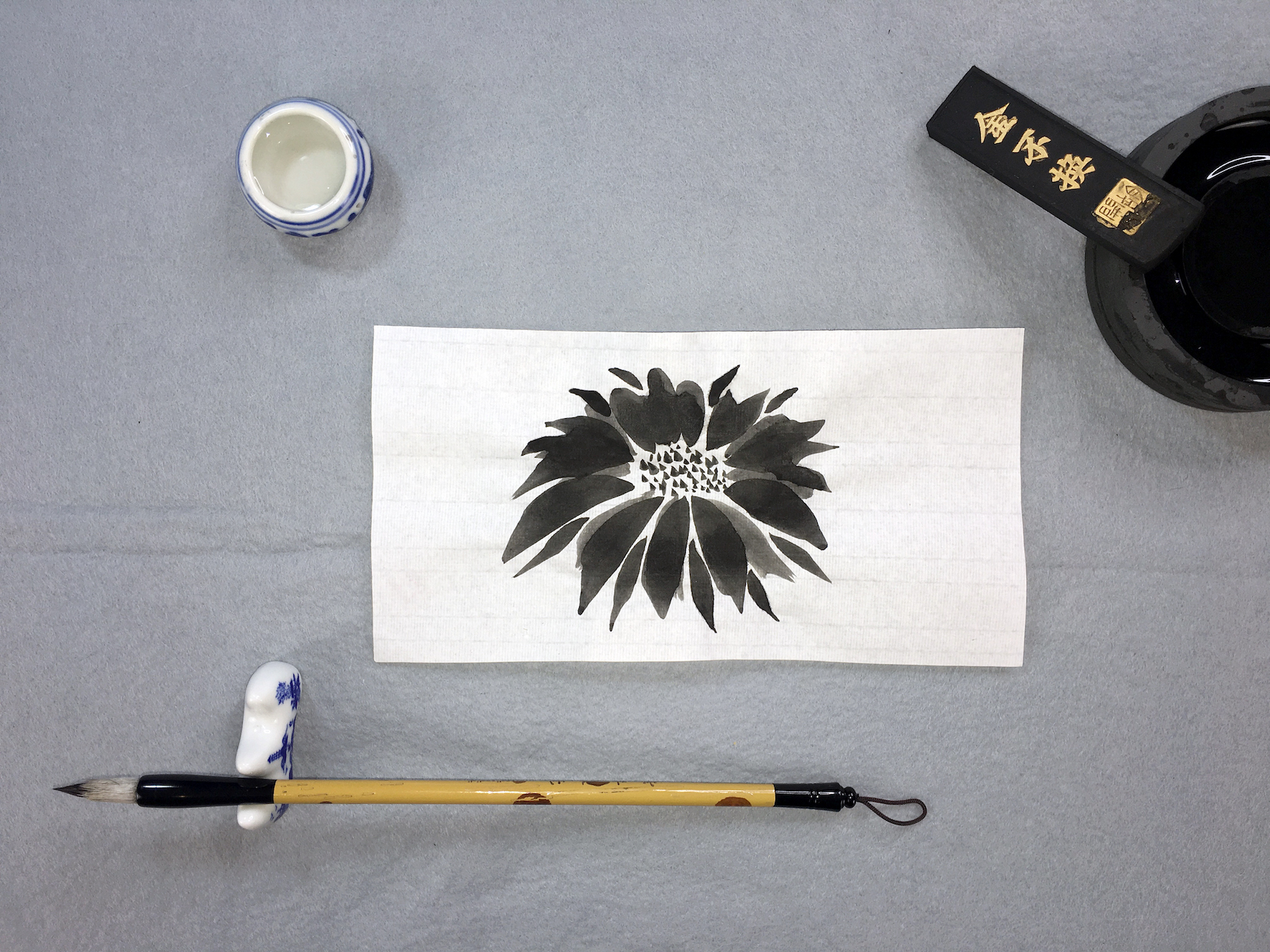Chinese brush painting isn’t just about creating art, it’s about the process itself. It’s a calming and relaxing form of art, with many people describing the process as spiritual.
This traditional form of art is steeped in history, and each piece of artwork you create will be in your own ‘handwriting’, each stamped unconsciously with your own style. In China, it’s very fittingly described as ‘writing the picture’.
In this free tutorial you will learn:
- The supplies you need to start brush painting
- How to grind ink using an inkstone
- How to hold the brush for Chinese brush painting
- How to do the Centre Stroke, aka Vertical Stroke
- How to do the Side Stroke, aka Horizontal Stroke
- How varying pressure and speed create different strokes
- How to do the Grass Stroke
- How to do the Bone Stroke
- How to do the Side Bone Stroke
- How to create dimensional dots
- How to paint simple leaves
- How to paint a poinsettia
- Expert tips and advice
We hope you like this article, a beginner’s guide to Chinese brush painting. If you do, why not check out some of our other beginner’s guides, right here on Gathered? If you’re into painting, why not try your hand at paint pouring with our beginner’s guide to acrylic paint pouring or how about learning how to paint a watercolour galaxy? You might also enjoy learning how to paint a watercolour cactus, watercolour pebbles or these easy watercolour flowers.
We love seeing what you make, so don’t forget to share your craft projects with us on Instagram, Facebook, or Twitter, too!
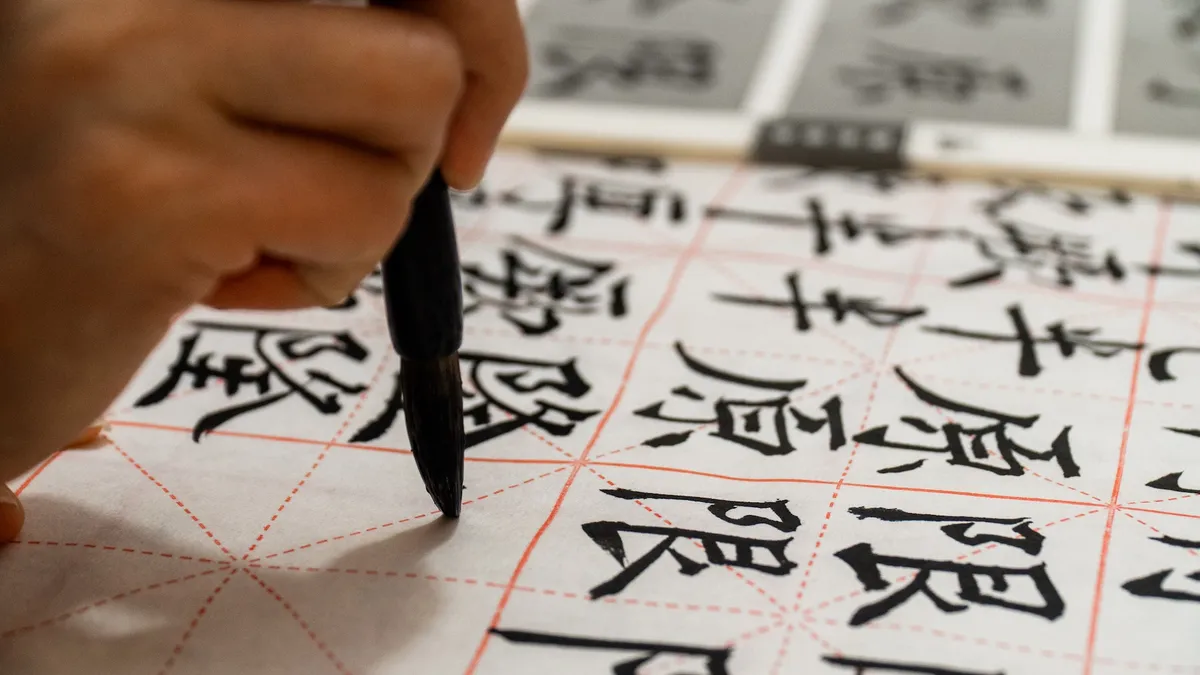
What is Chinese brush painting?
Chinese brush painting is about capturing the essence, or spirit of something; it’s a symbolic expression of a plant, landscape, animal, tree, or figure, using minimal brushstrokes. It can help you centre your mind, and is especially useful if you’ve found some success with mindfulness through art.
The art form can be traced back as far as the Palaeolithic when rocks in the Yin Mountains and the Yunnan Province were decorated with animals, battles, ceremonies, and scenes of village life.
But it wasn’t until the Song Dynasty, from 960 to 1271 AD, that it would really take off. It’s thanks to Zhao Ji, who would later become Emperor Huizong, and his passion for the arts, that Chinese painting developed at that time.
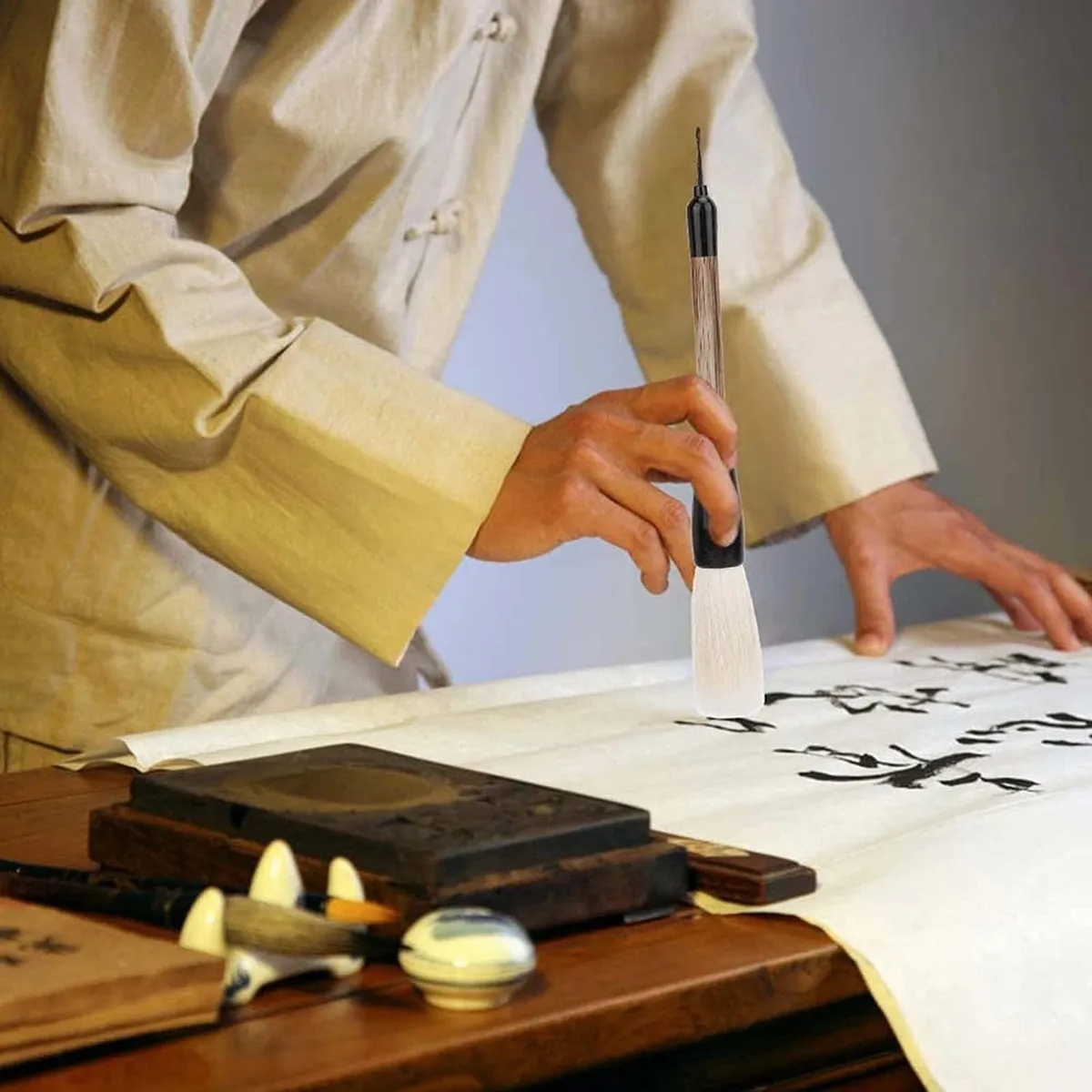
Top tips for Chinese brush painting
- Unlike other some painting techniques, in Chinese brush painting, we always start with a wet brush. Start by wetting your brush in some clean water, then get rid of the excess by pulling the tip over the side of your water container.
- When starting out, begin with a basic grip on the brush. Hold your brush as you would a pen or pencil, but position it vertically, at a 90-degree angle to your paper. Let the brush rest on your middle finger, anchor it with your thumb, and manipulate it with your index finger.
- Try to keep the heel of the brush (the part of the brush tip closest to the handle) free of colour. The water held in the heel will migrate down and create some interesting variation in your work. This is useful if you’re painting flowers or leaves.
- Chinese brush painting often utilises the artist's feelings or emotions (that’s you!), so think about capturing the spirit of the subject, rather than going for absolute scientific accuracy. For example, the delicacy of cherry blossoms, the dramatic nature of branches as they swoop into the frame, or the elegance of an orchid.
- Don’t be afraid to leave white spaces in your work. In Chinese brush painting, empty space can convey information through a lack of imagery, depicting vast skies, rivers, lakes, or seas. In Chinese literature, much is gained through what is unsaid, and so empty space in Chinese brush painting can become a crucial component in itself.
- To save wasting precious rice paper as you’re practising, standard newspaper is a brilliant alternative. I like to choose those pages of ads with lots of white space, but it doesn’t really matter which you go for.
- If you’re creating your own scene, consider using the rule of thirds for a pleasing composition.
- If you want to speed up drying time, use a heat tool in the lowest setting, but be careful not to over-dry.
- Consider adding outlines to emphasise areas of your artwork. For example, outlining flower buds in light ink can differentiate them from the other flowers in bloom.
- Experiment with varying the pressure, angle, and speed of the brush as you lay down ink for different effects. For example, a short-stroke will create short leaves, such as baby leaves or peach tree leaves, and a longer stroke will create longer leaves, such as willow or bamboo.
- Lay something padded underneath the paper you're working on. This could be a newspaper, or a lot of artists will use more sheets of paper, or a large sheet of felt.
Chinese brush painting supplies
You’ll often hear references to ‘the four treasures’ in Chinese brush painting. These are the four most important objects for artists and consist of:
- Brush
- Paper
- Ink
- Inkstone
However, you only need a brush and some ink to get started. Use what you have, but if you’re looking to buy new, here are our recommendations for Chinese brush painting supplies:
Chinese Brush Painting Supplies: Brushes, 9 pack
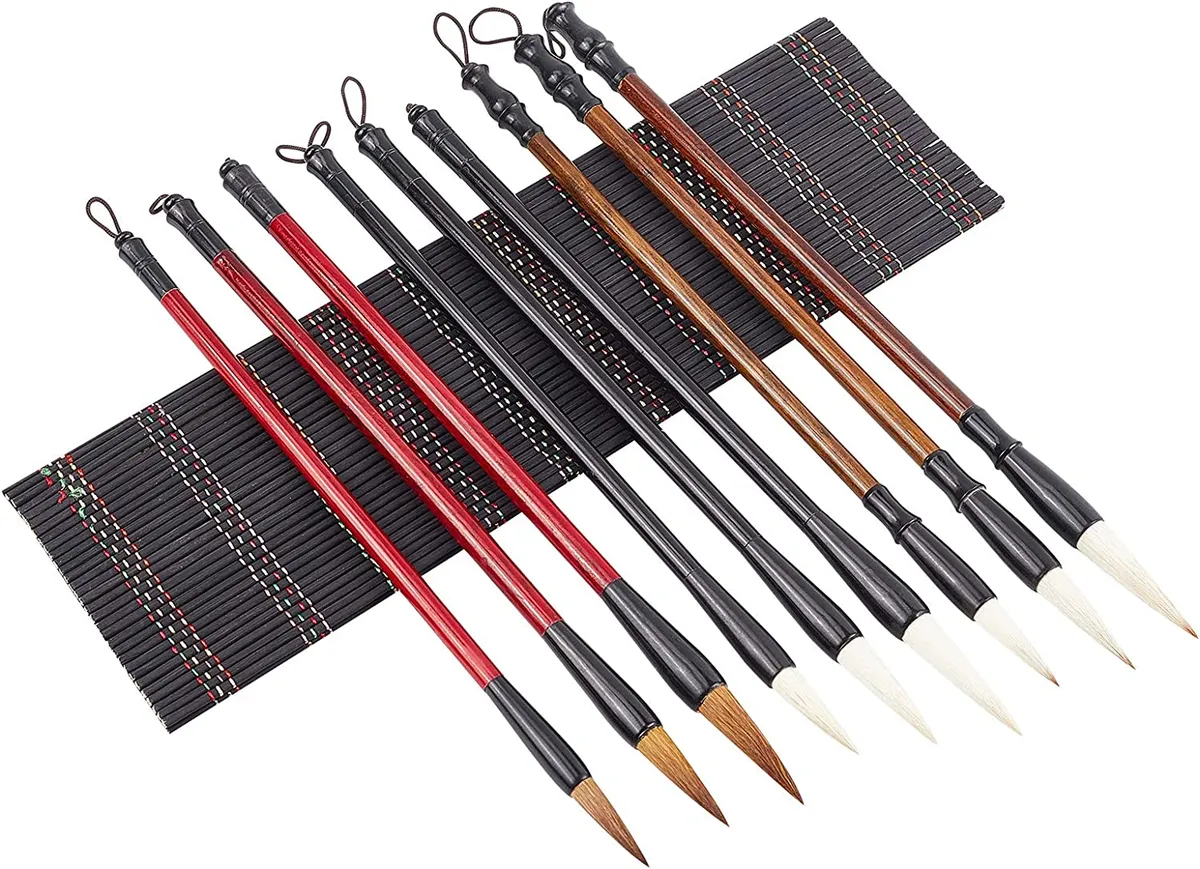
Brushes used in Chinese brush painting are usually fuller than the ones you might use in watercolour or acrylic painting. They’re either flat-tipped (for example Hake brushes which are often used for background washes), or round-tipped, and are made from natural materials. Hake brushes are a flat brush.
This brush set from PandaHall contains 9 brushes that are fairly uniform in size, which is great if you're keen to try some calligraphy alongside Chinese brush painting.
If you're looking for more calligraphy supplies, check out our round-up of the best calligraphy kits for beginners.
Chinese Brush Painting Supplies: Brushes, 7 pack
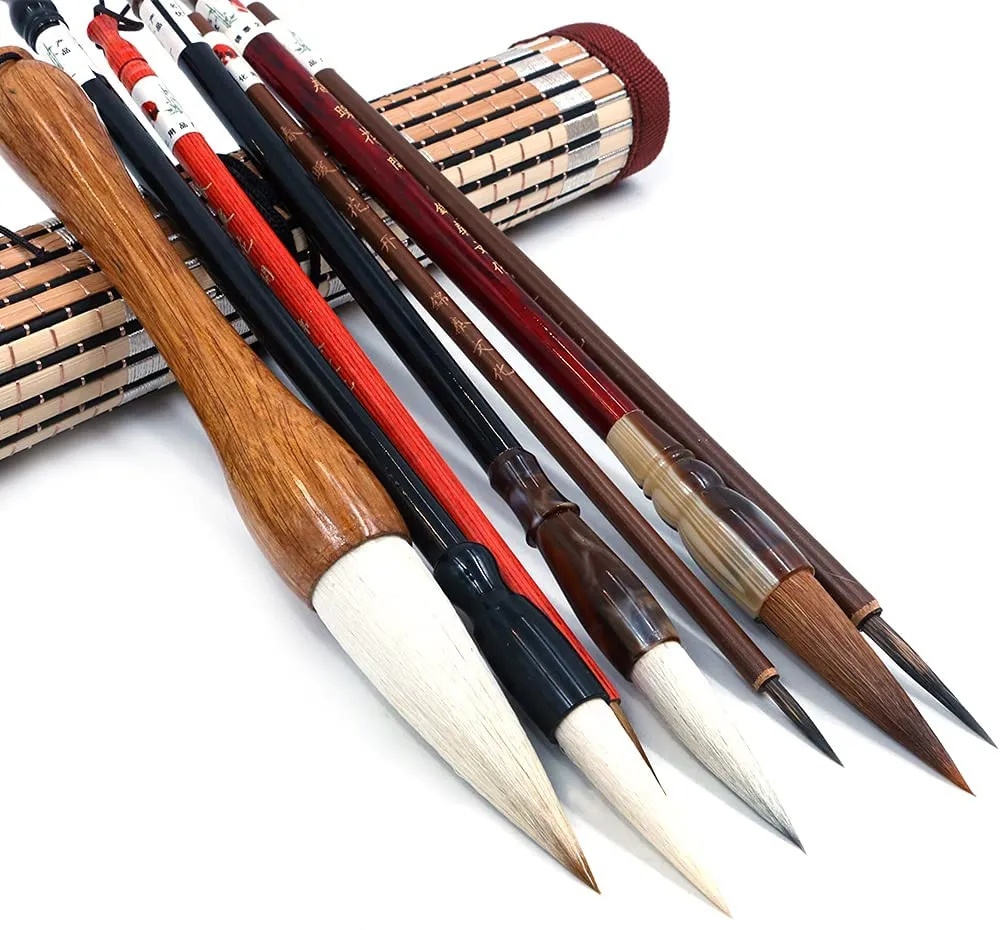
Chinese painting brushes can be split into three broad categories: soft, hard and combination. Soft brushes are very absorbent, so they can carry a lot of moisture, hard brushes are more resilient and ‘bounce’, and combination brushes are made with an outer layer of soft hair, and an inner core of hard hair.
This brush kit contains seven different in the most popular sizes for beginners, and comes with a nice brush roll to store them in. There is more variation in sizes than the previous set (above), but if you're looking to dive into just Chinese brush painting and more illustrative paintings (as opposed to wanting to use them for calligraphy), then this is a great set to have, and certainly recommended for those starting out. You'll soon get an idea of which size brushes are your favourite.
Chinese Brush Painting Supplies: Ink

Traditionally, an ink stick and ink stone is used in Chinese brush painting. The ink sticks themselves are made of the soot that comes from burning wood chips and plant oil. The soot is blended together with glue, kneaded to a dough-like consistency before being put into moulds and left to dry over the course of a few months.
By the time we come to use it, the ink has been cleaned and polished, and often decorated. The ink is then used by grinding the stick against a surface (ink stone), with a small amount of water.
Chinese Brush Painting Supplies: Inkstone

An inkstone is usually made from nonporous slate, carved into a rectangular or circular well shape. It is essentially the stone mortar that is used for grinding the ink onto. To use an ink stone, hold the ink stick vertically and rub it on the inkstone, using a circular motion.
As grinding the ink is part of the process, take it slow and try to be mindful as you’re grinding. Take notice of the feel of the stick on the ink stone, how the ink stone gradually grinds down releasing tiny particles of ink, and the sound of the ink on the stone. You might even experience the calming effect that many artists enjoy.
Chinese Brush Painting Supplies: Chinese calligraphy ink and inkstone
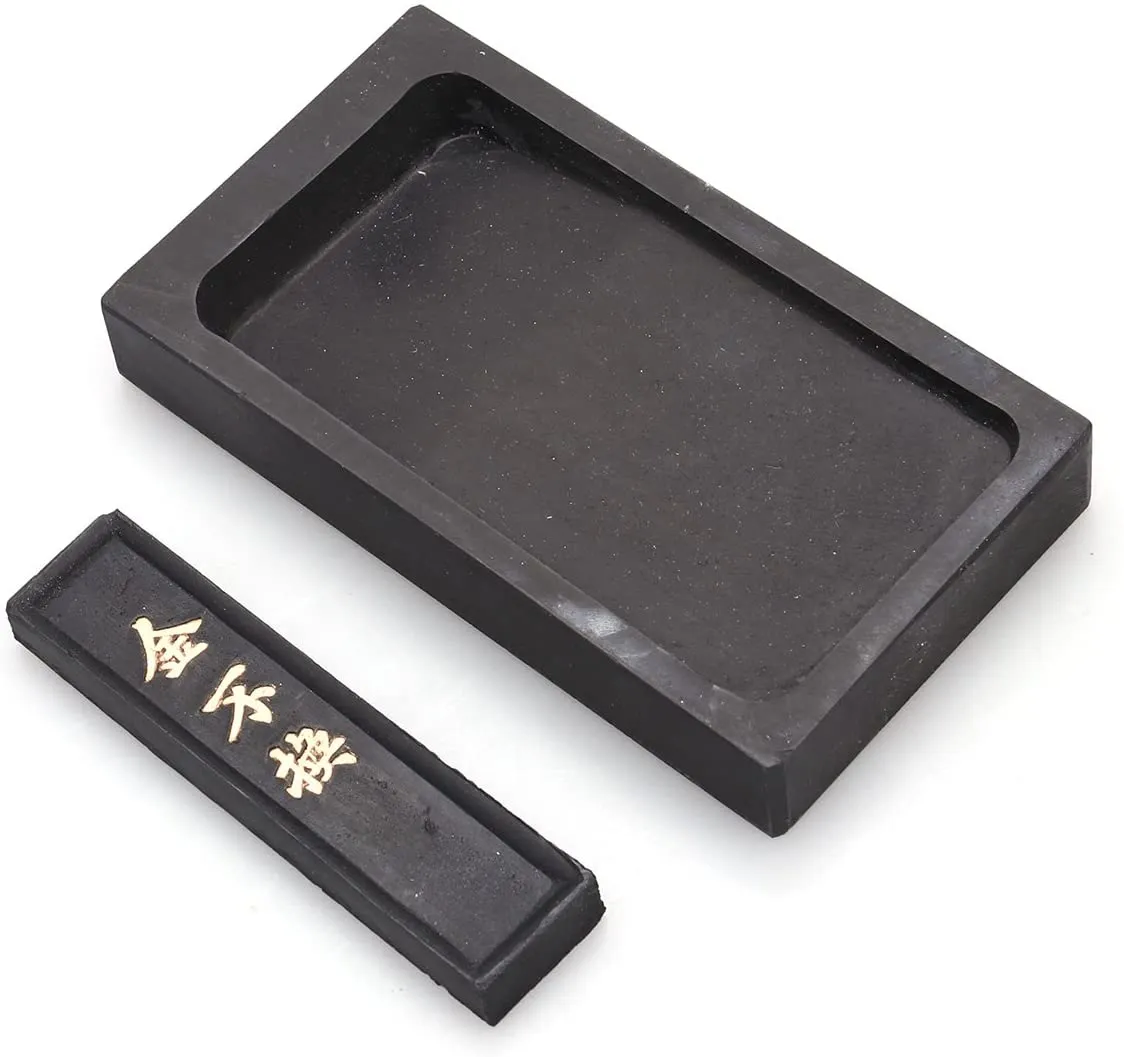
If you’re just starting out, you don’t need to buy your ink and ink stone separately, and there are some nice kits you can get hold of on Amazon. Of course, once you have the ink stone you will very rarely, if ever, need to replace it. So a kit like this one is a great place to start.
Chinese Brush Painting Supplies: Liquid ink
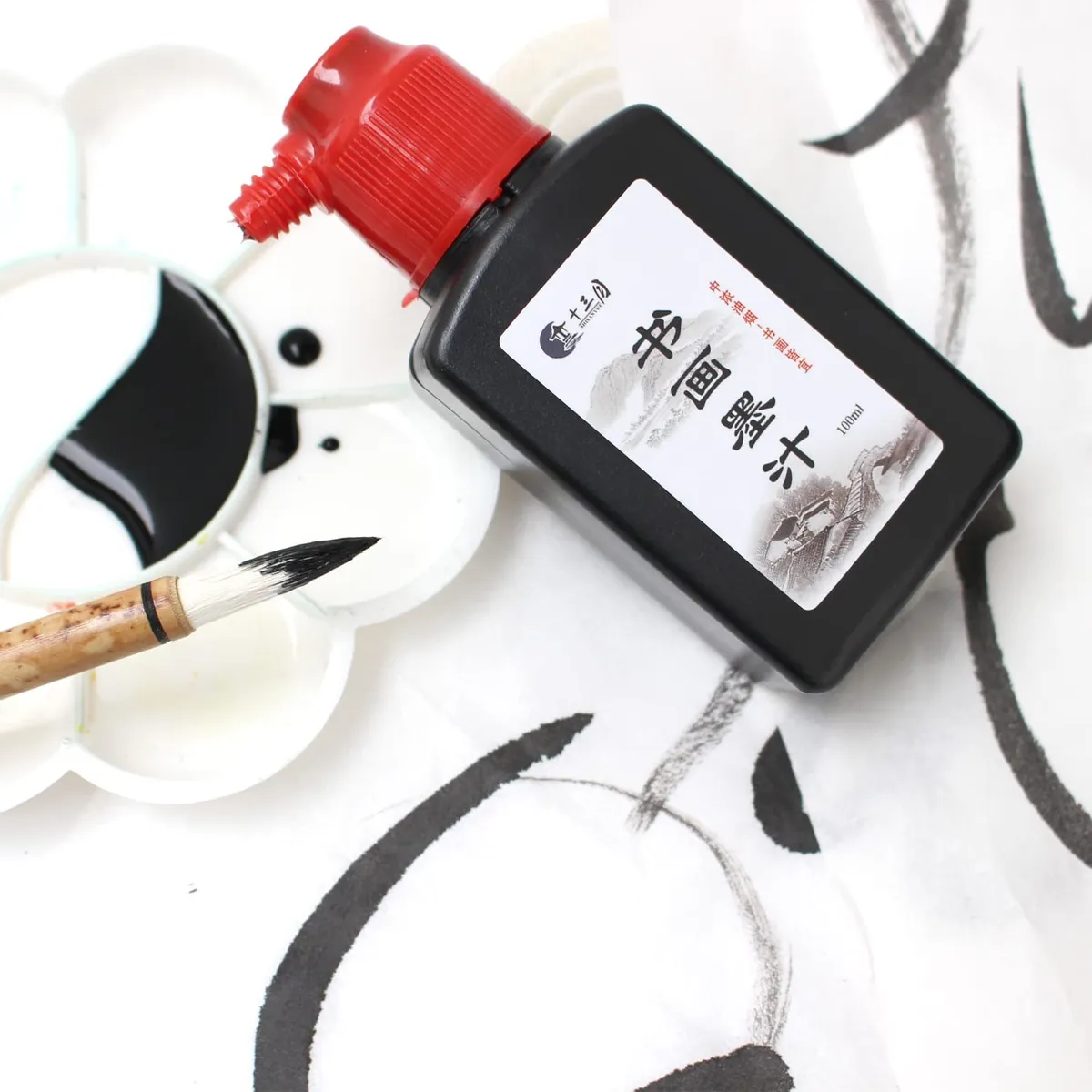
Grinding the ink on the ink stone is part of the mindful process to Chinese brush painting, but there are plenty of alternatives if you would prefer to just get painting. If you’re keeping it simple, then look for Chinese black ink (be sure it’s not Indian ink as the coverage is too solid to create the graduated effects).
This Chinese Sumi ink is made in the Jiangxi Province of South East China and is made from the traditional recipe – but in liquid form. Use neat for calligraphy and letter work or mix with a little water for brush painting and gradient effects.
Chinese Brush Painting Supplies: Rice paper
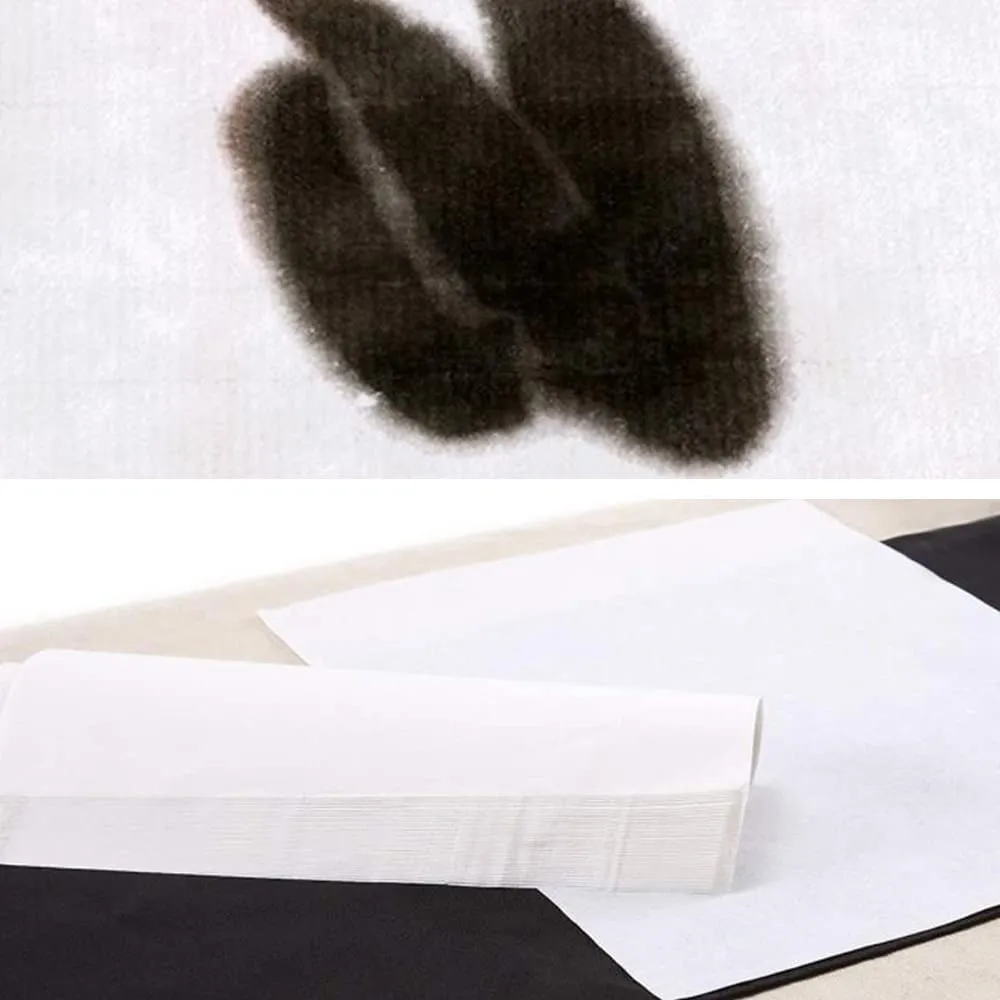
Despite the name, rice paper is not actually made of rice. It’s commonly made from reeds, elm, bamboo, cotton, grass and/or hemp, and is usually very lightweight, translucent, and absorbent. It often comes in rolls, or sizes larger than A4 but it’s easy to cut down for practise.
Chinese Brush Painting Supplies: Brush rest

Keep your ink or water-laden brush free from contamination with a brush rest. It’s useful for when you just need to quickly pop the brush down for a moment and don’t want to overload it with water by putting it fully into the water container.
There are all sorts of brush rests you can buy, but we really like this resin one, as it’s simple and does the job without adding clutter to your desk. Being made from resin (instead of the traditional porcelain), means it’s less likely to sustain damage, as well as being light and portable.
Chinese Brush Painting Supplies: Alternative brush rest

If you’ve only got one or two brushes, then be sure to check out chopstick rests as an alternative to the traditional paintbrush rests. We absolutely love these Shiba Inu rests! There are all sorts of other fun alternatives too, like these ceramic vegetable rests or these adorable cat rests!
Chinese Brush Painting Supplies: Chinese brush painting kit
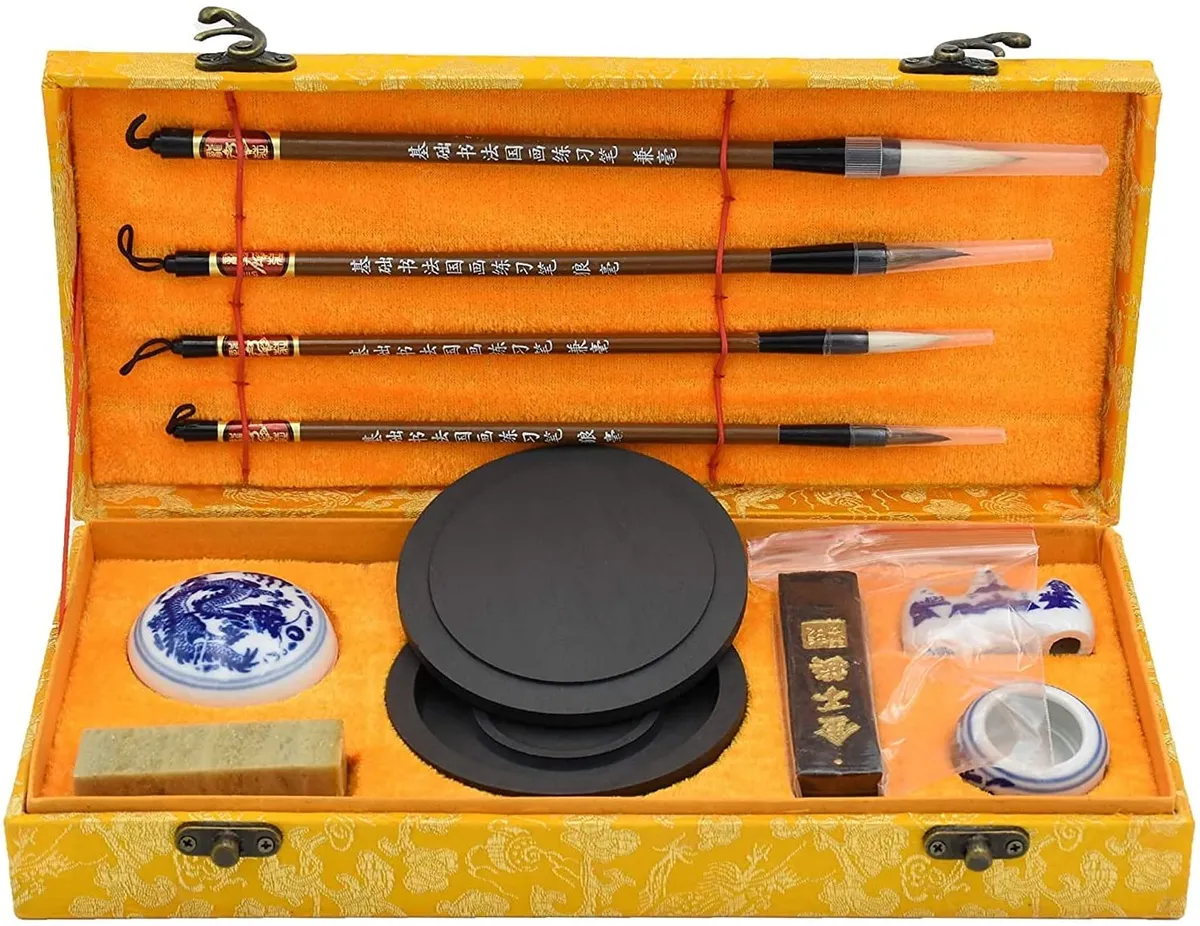
Don’t want to buy everything separately? Or perhaps you’re reading this article and thinking that a kit would make a nice gift for a craft friend or family member? Then we like this Chinese Calligraphy Writing Kit from Amazon, and it’s the one we’re using in this tutorial, so scroll down to see it in action.
It comes with everything you need to get started: four brushes, ink, an ink stone, brush rest and small bowl, presented in a lovely (sturdy) yellow box that looks great in your craft room.
Chinese Brush Painting Supplies: Technical pencil

You can get some beautiful effects in Chinese brush painting, by just ‘going for it’. But, if you prefer to plan your work in advance, lightly sketching the placement of the different elements of your design can help you become more confident as you build up your skill set.
A simple technical pencil, like these ones from Faber-Castell will do the trick. Not quite what you’re looking for? Check out our round-up of the best mechanical pencils for drawing, to find the best one for you.
Chinese Brush Painting Supplies: The Chinese Brush Painting Bible
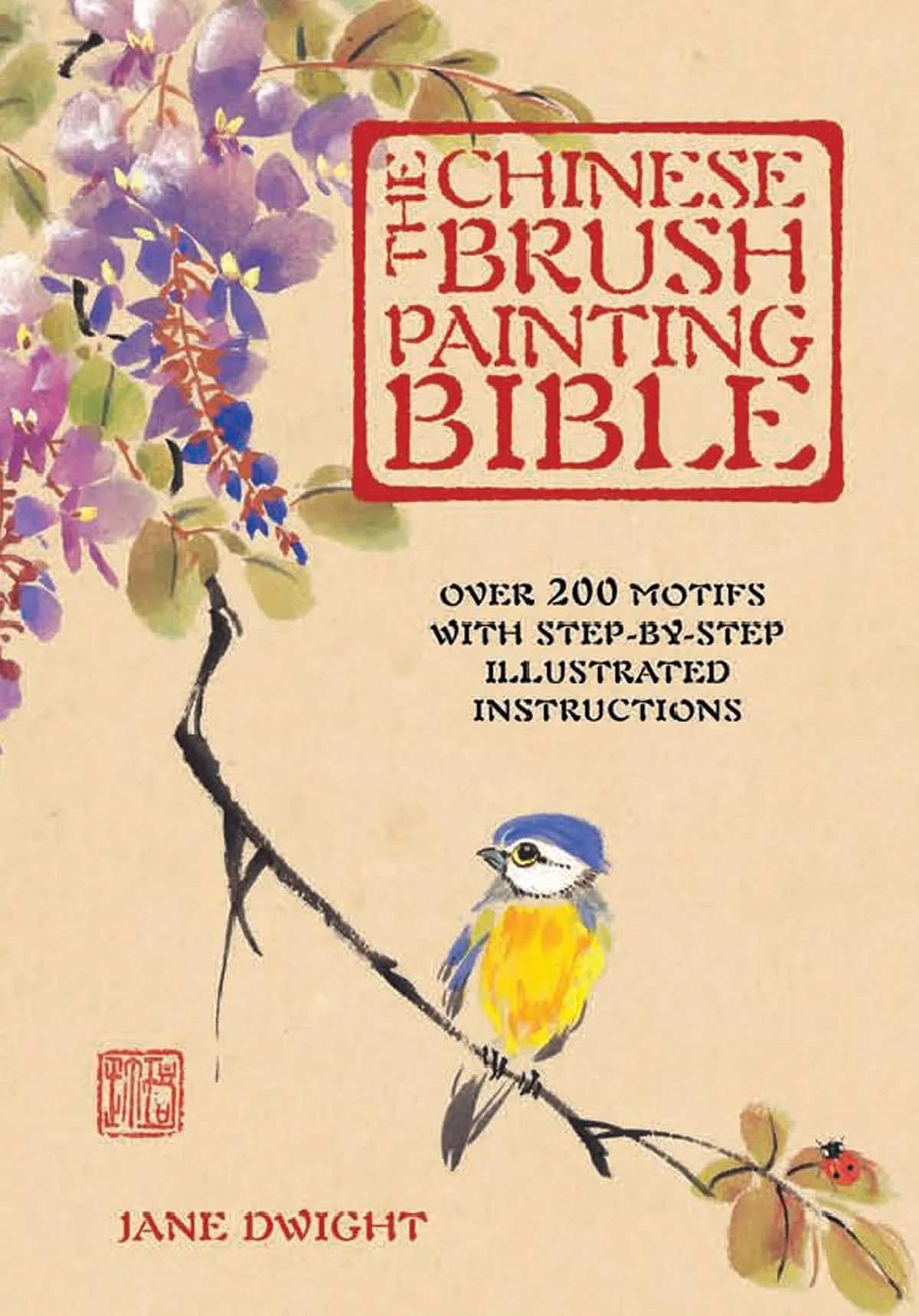
Feeling inspired to try out Chinese brush painting, or take an even deeper dive into the subject? Then you might like to take a look at The Chinese Brush Painting Bible. It comes with over 200 designs to try, with simple and clear steps all the way through, from flowers and fruits to wildlife and scenery. It even comes spiral-bound, so it will lie flat as you’re following the tutorials.
